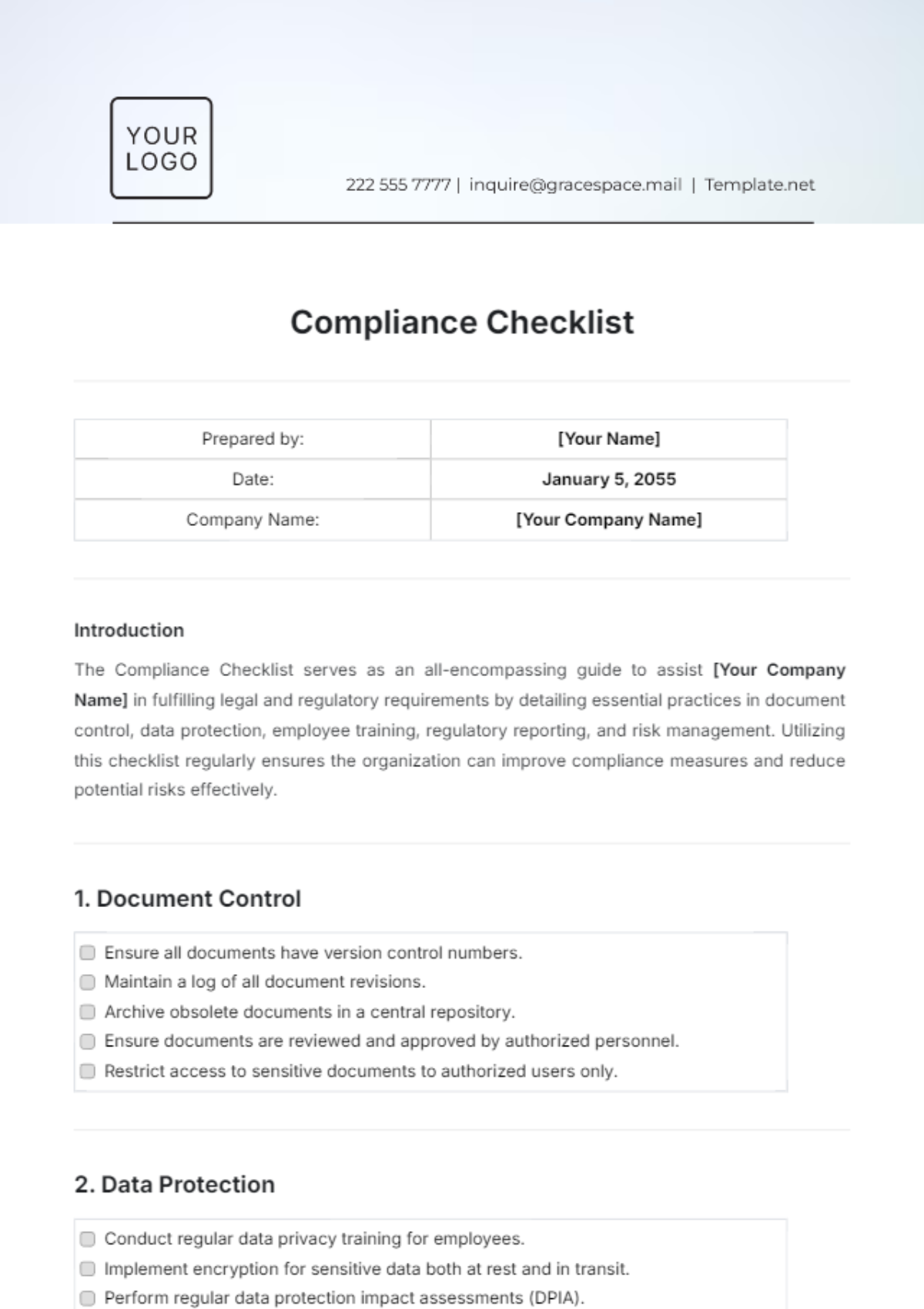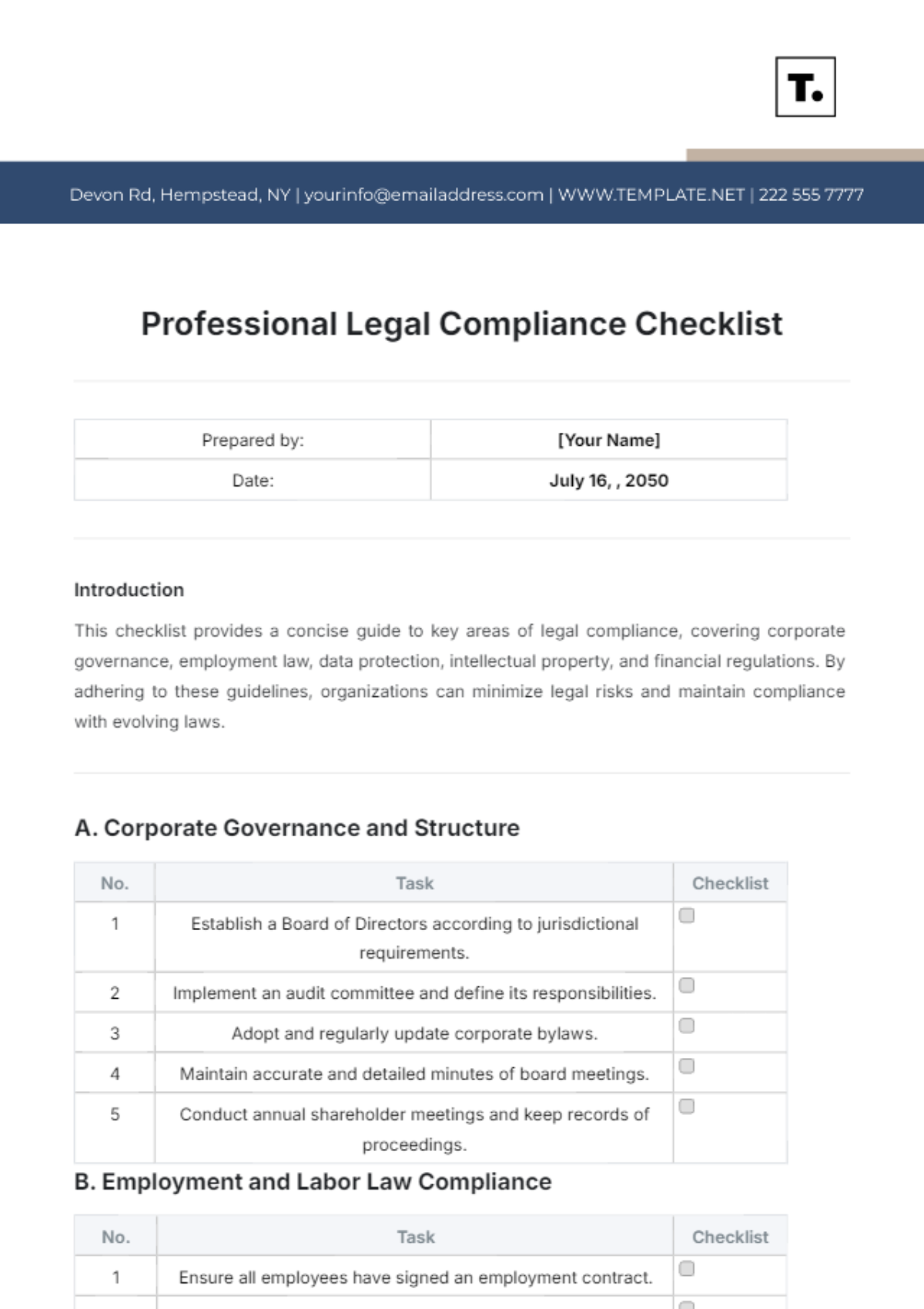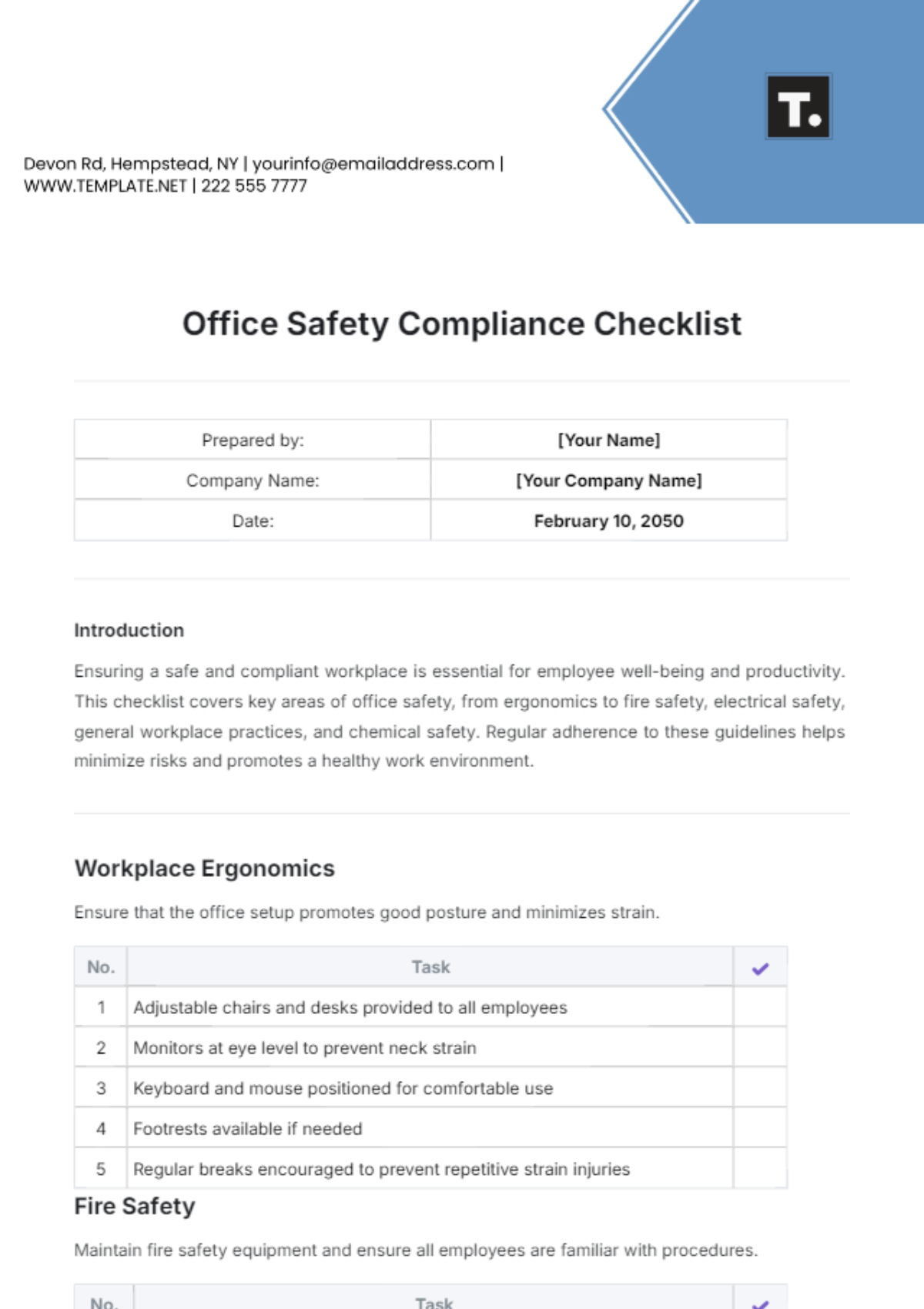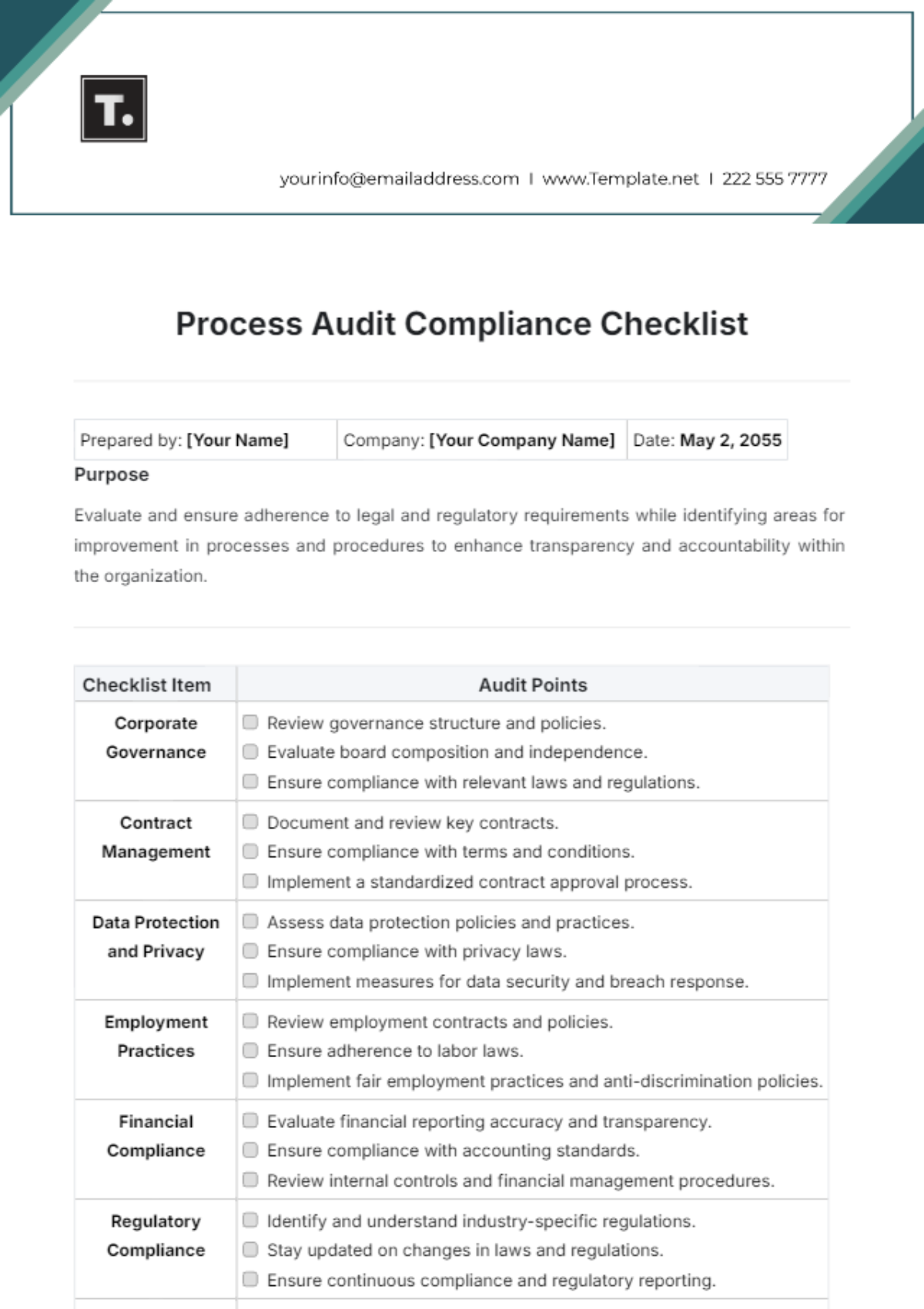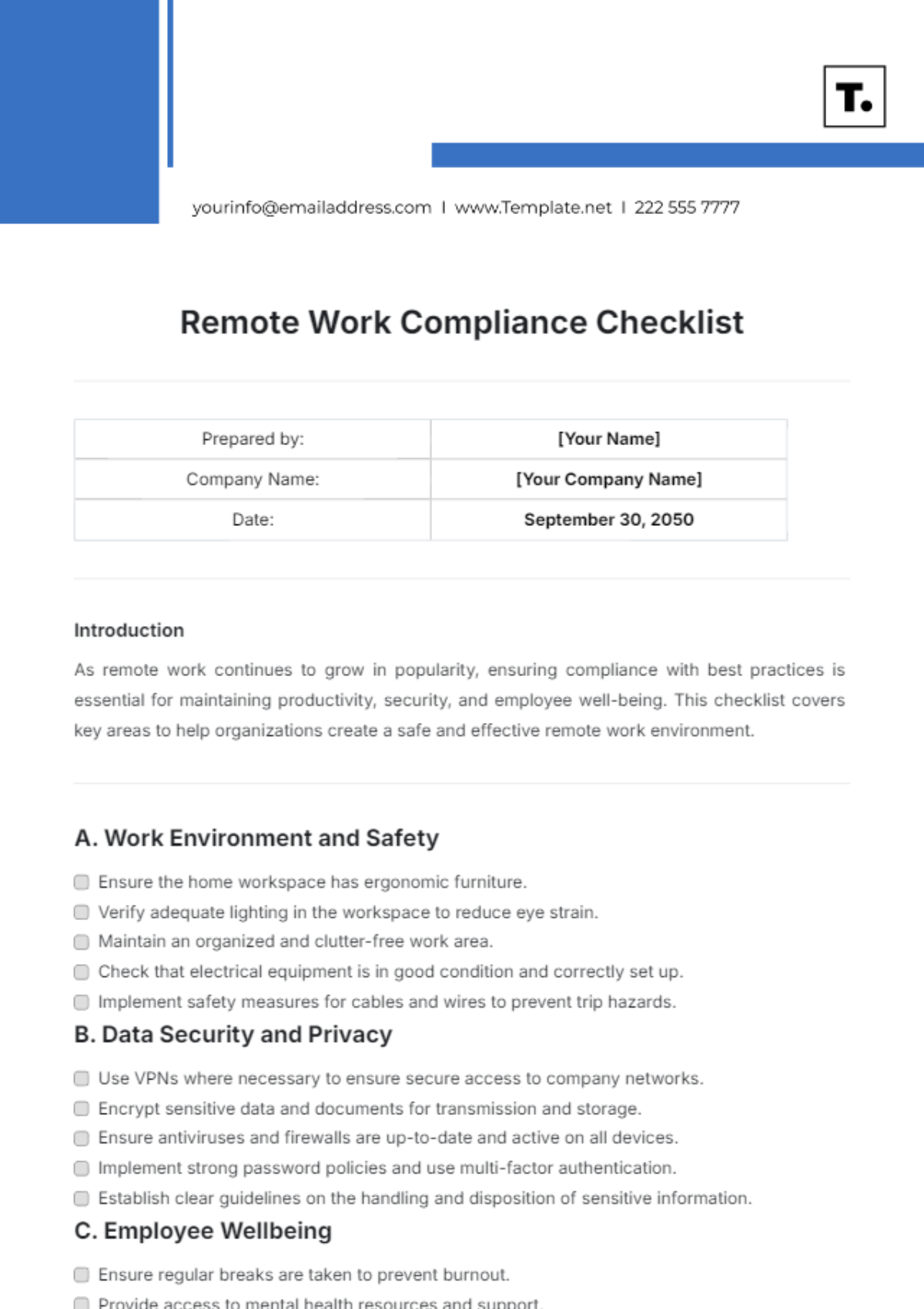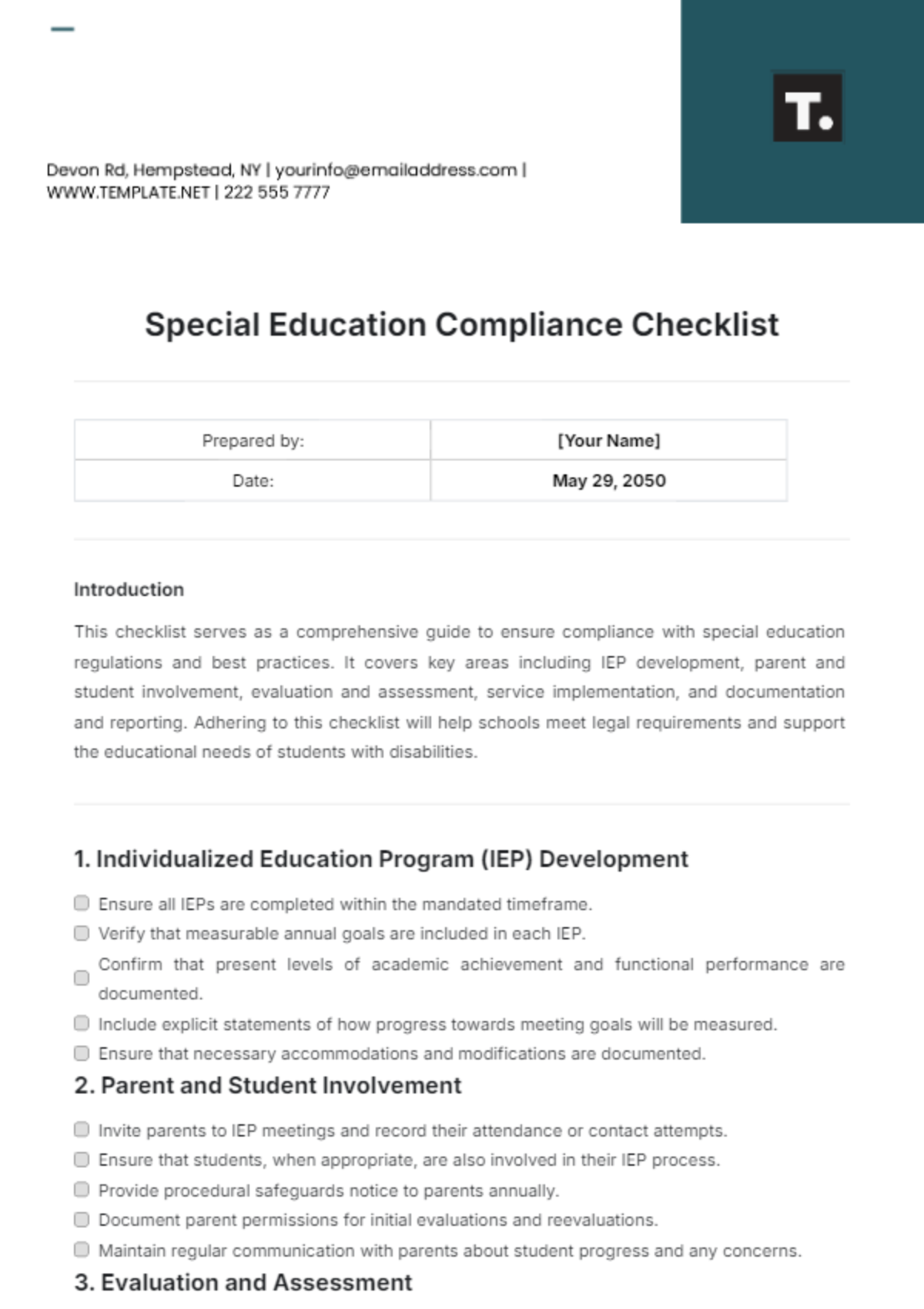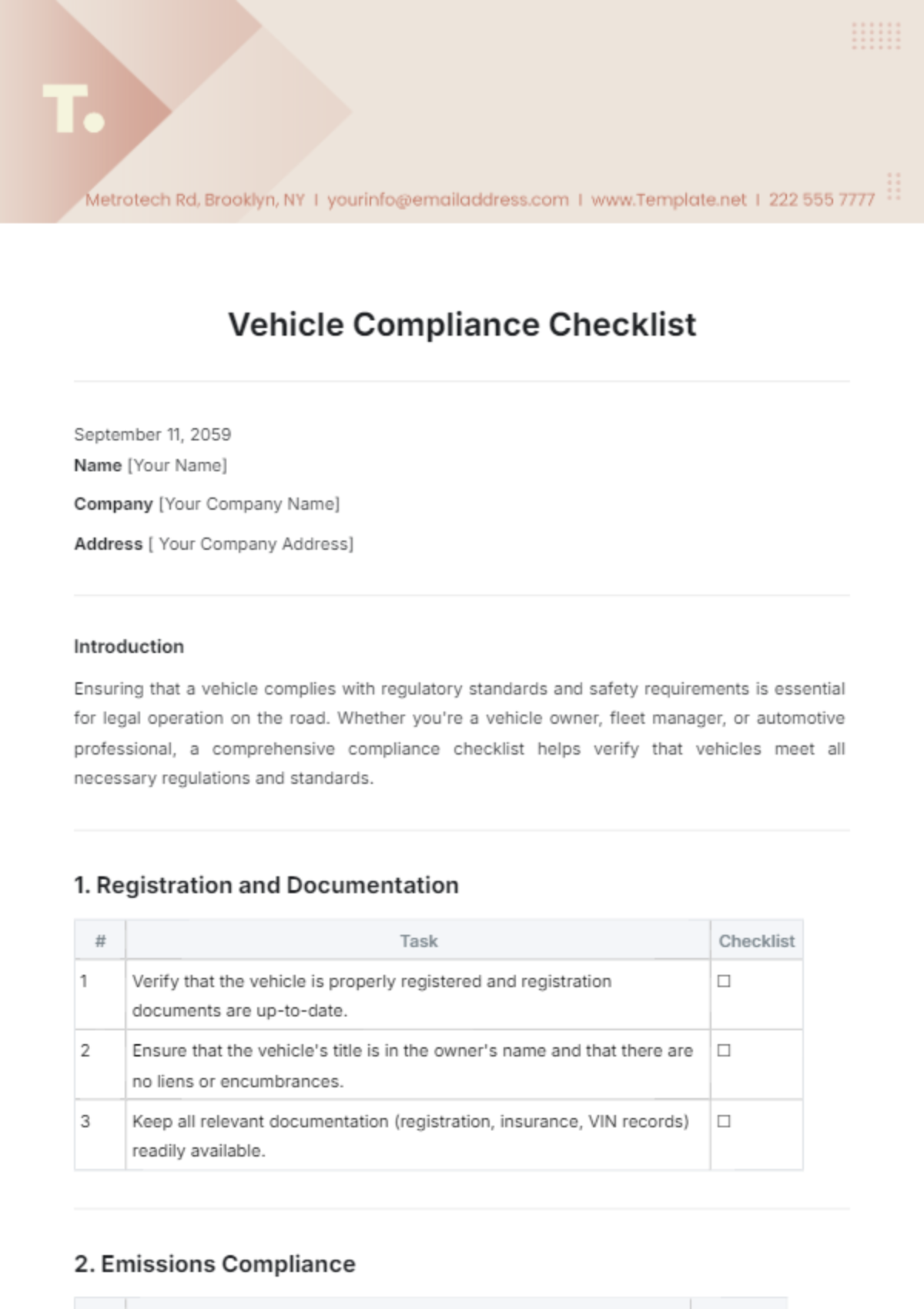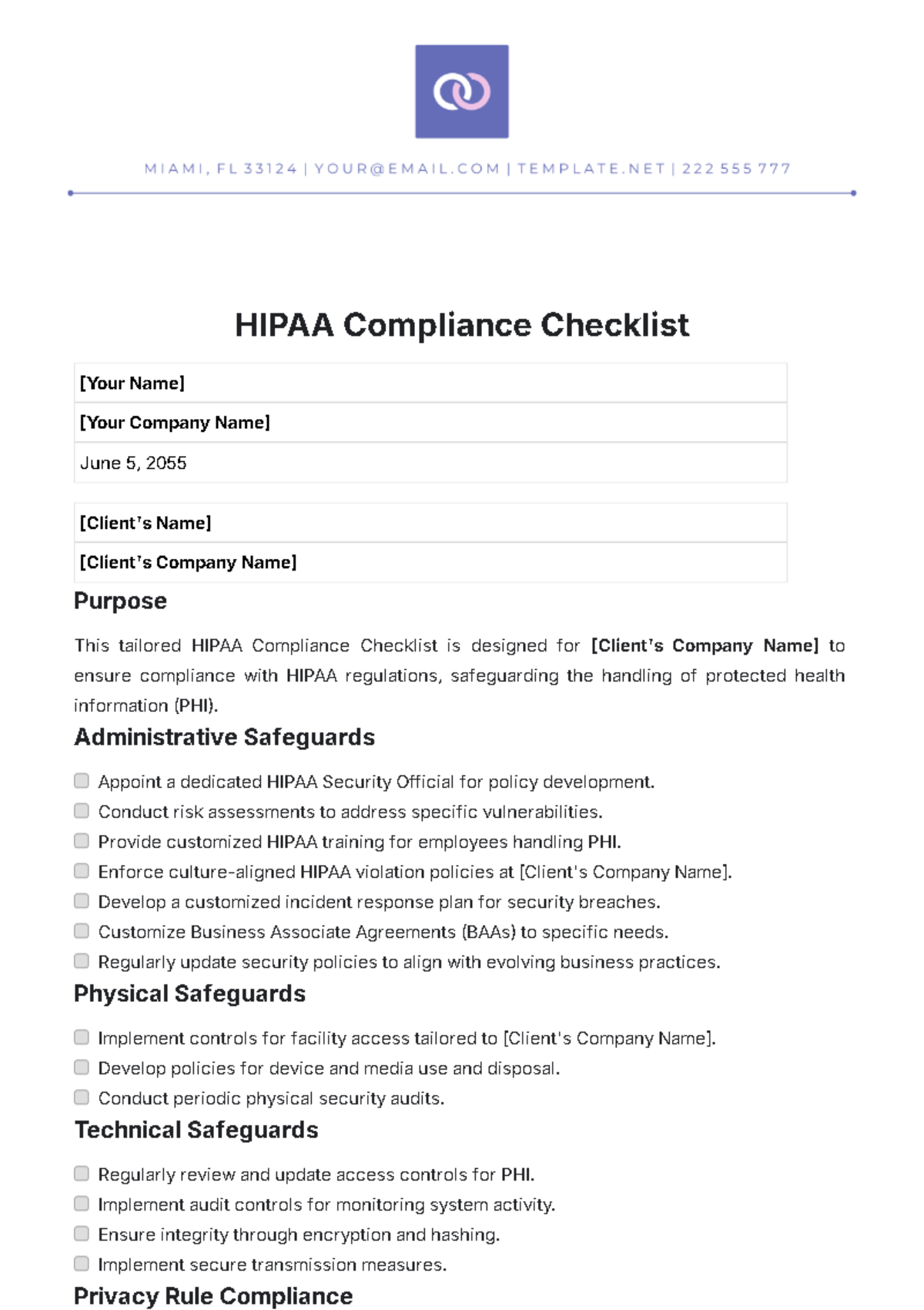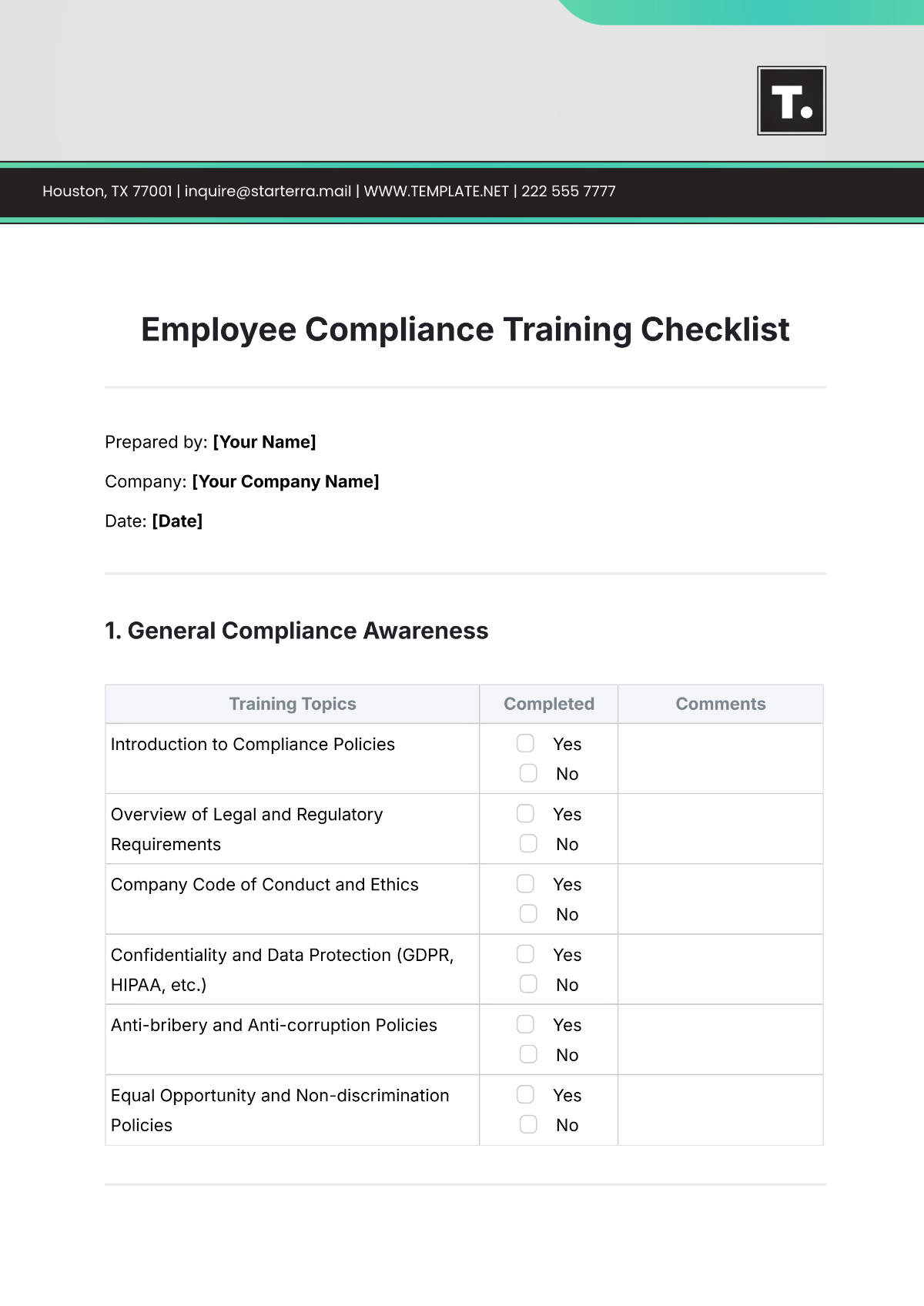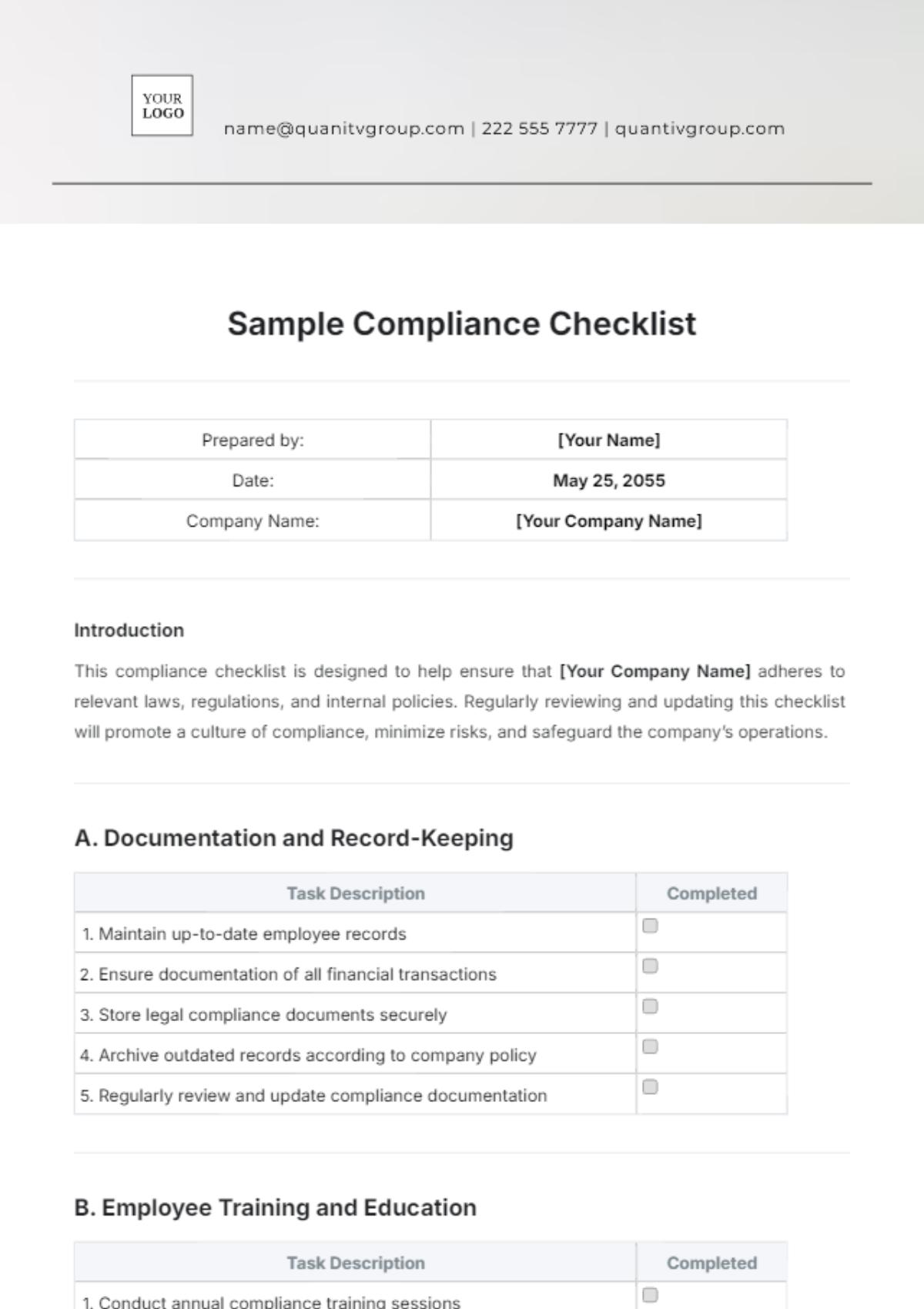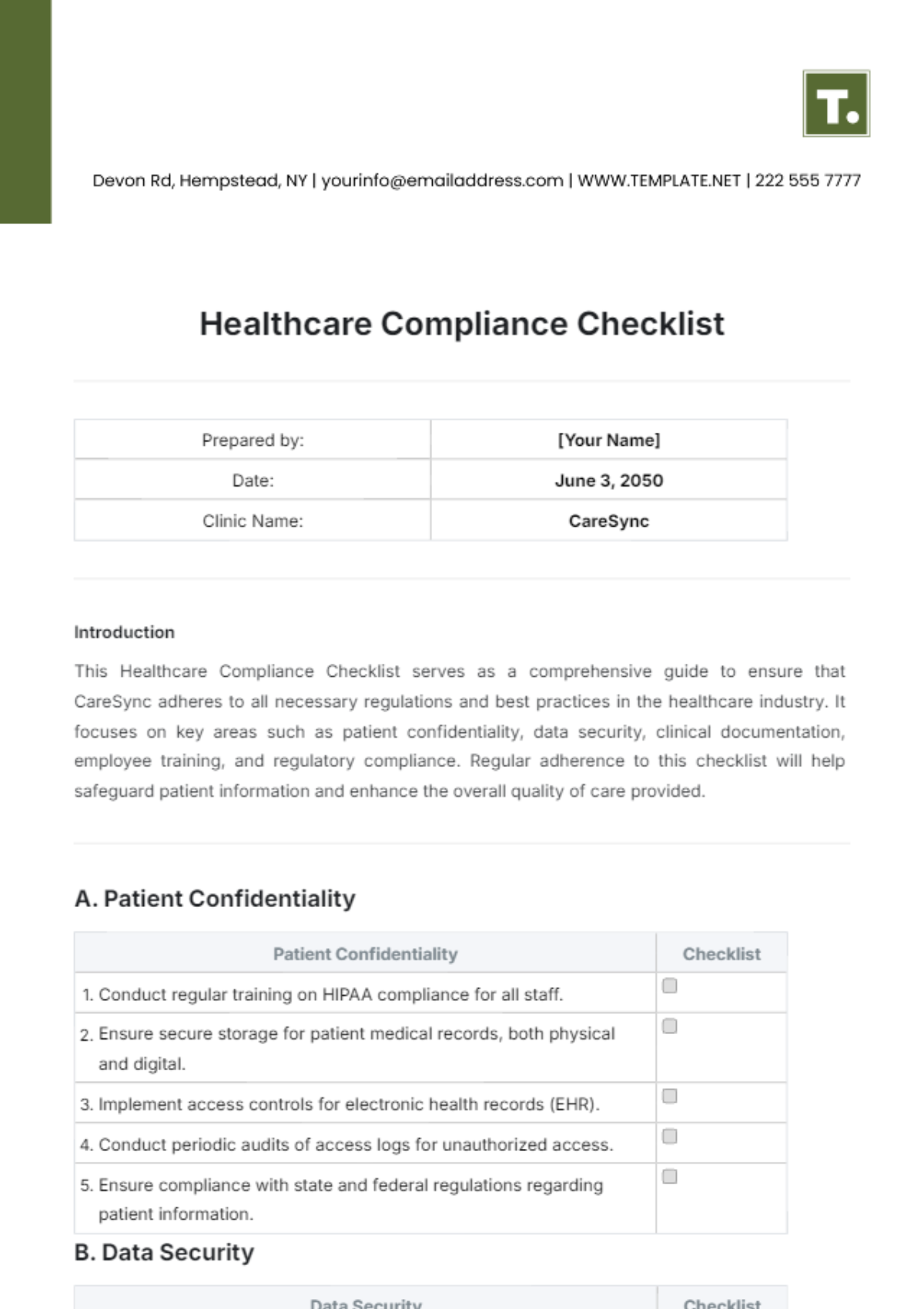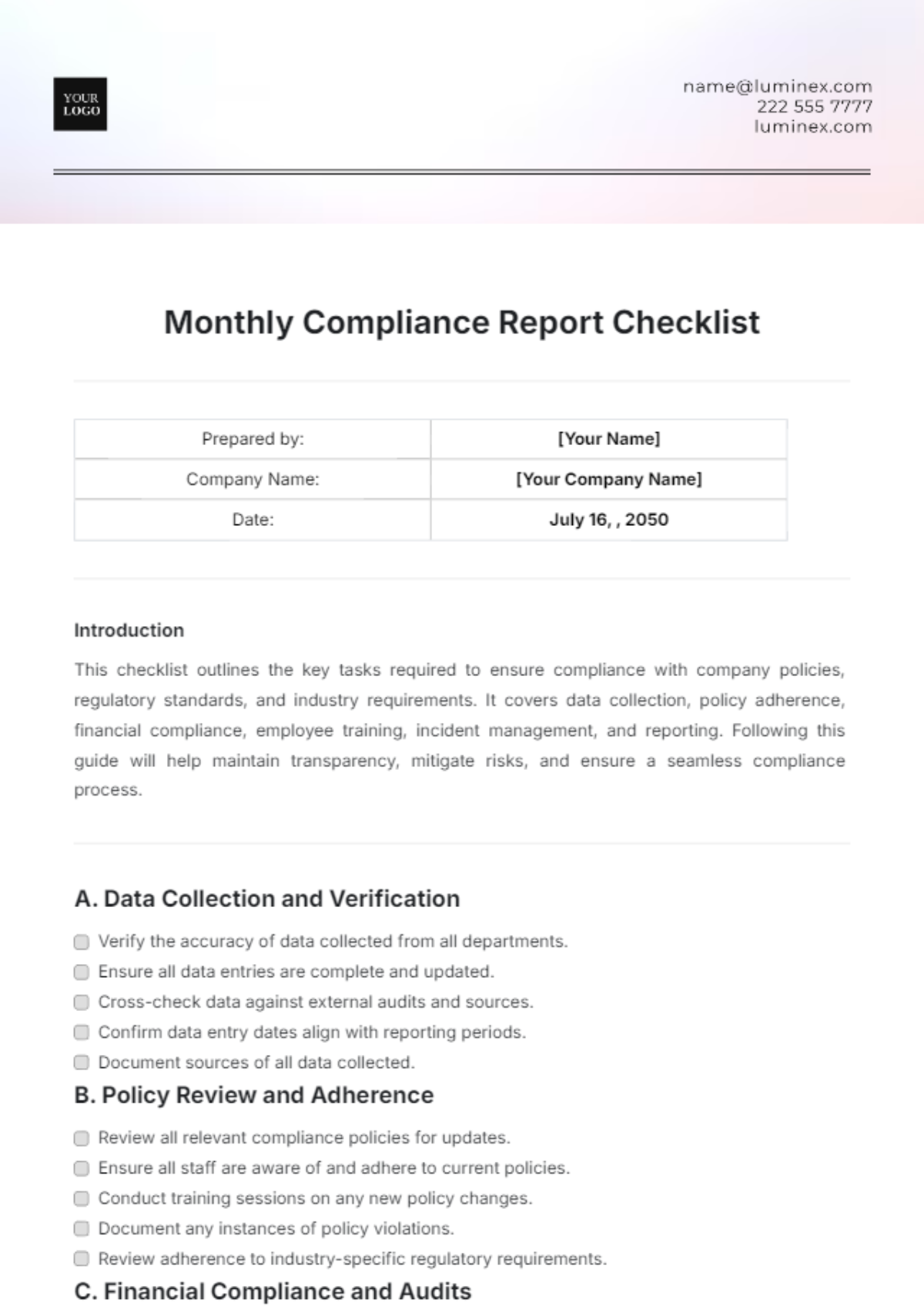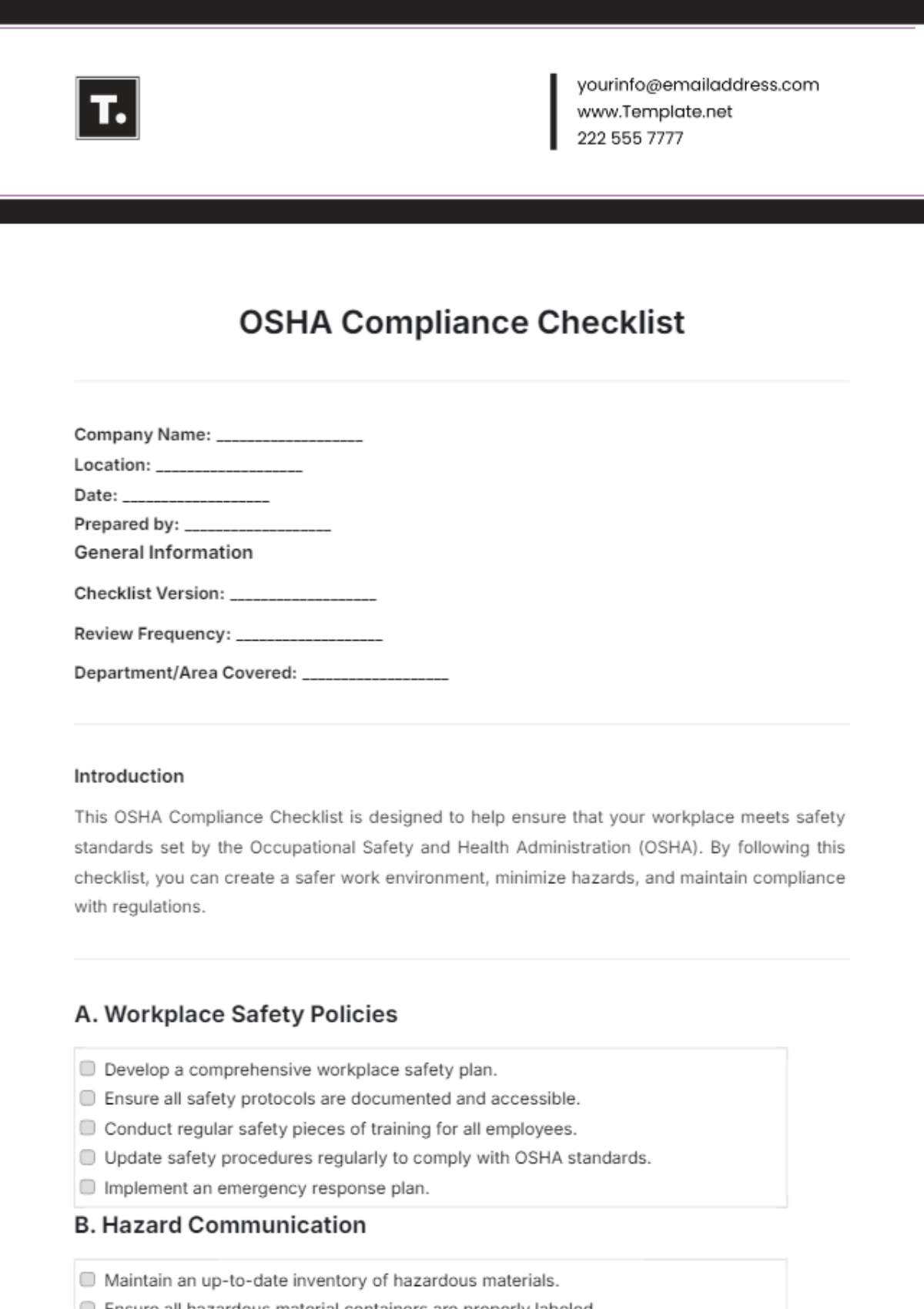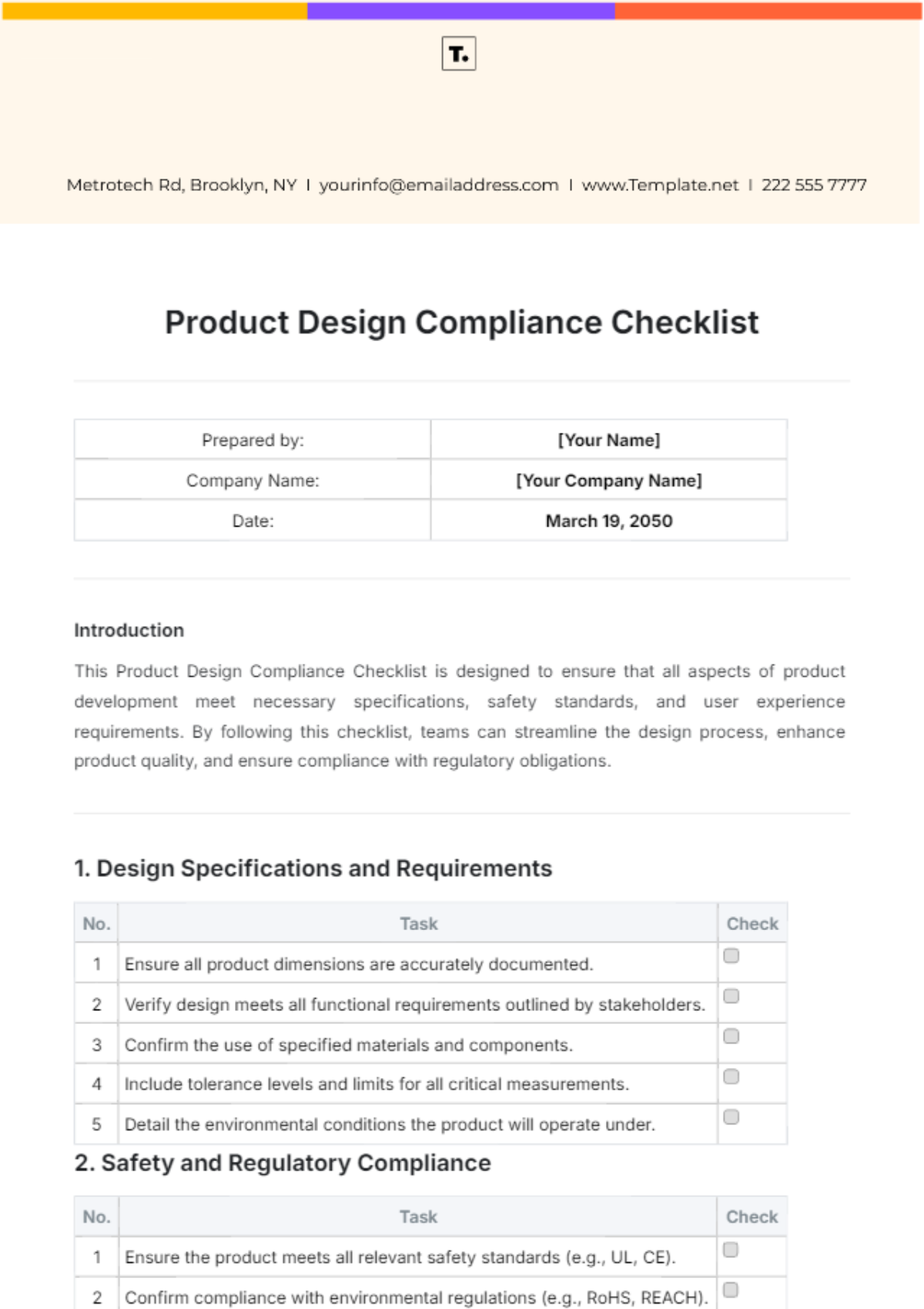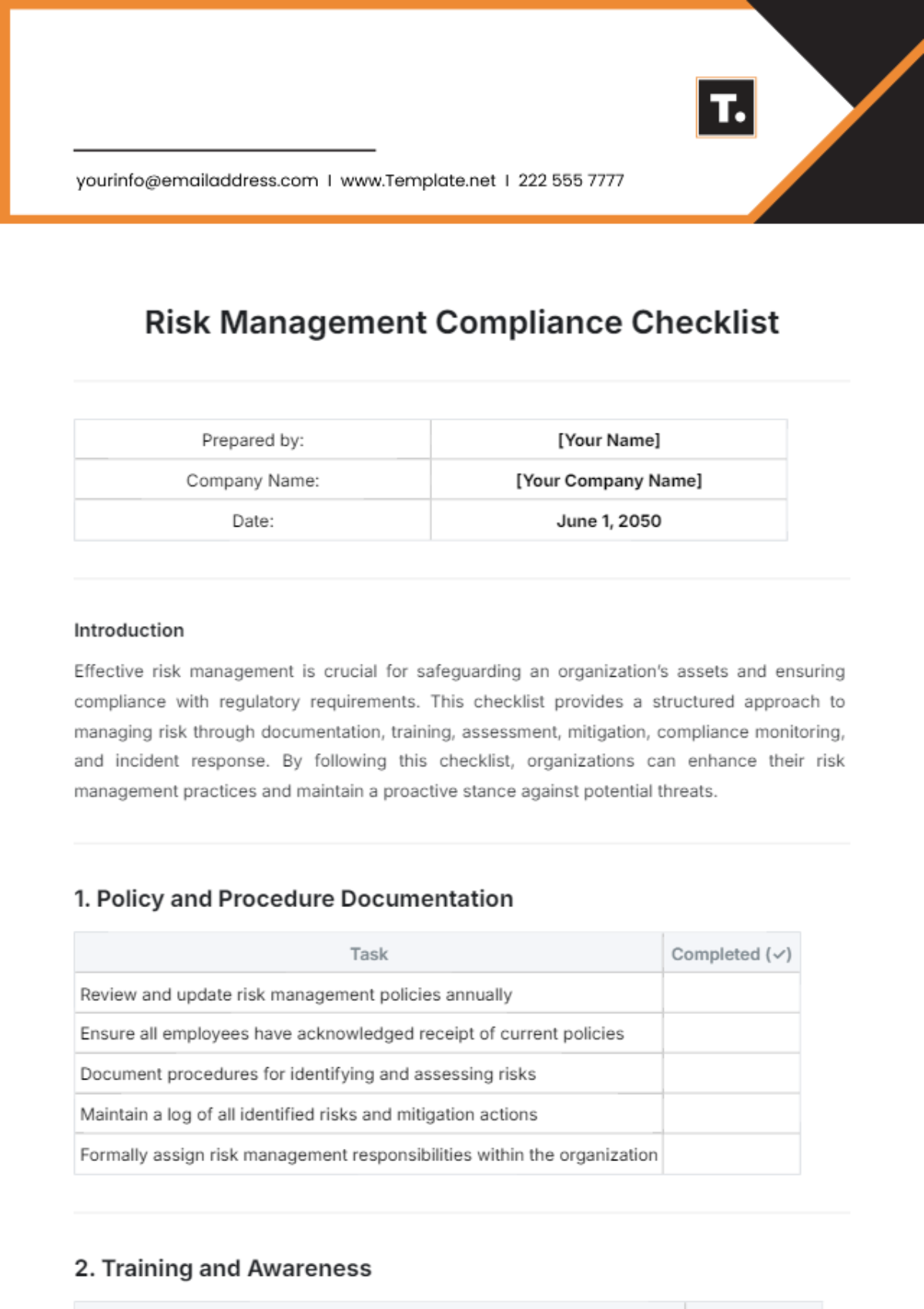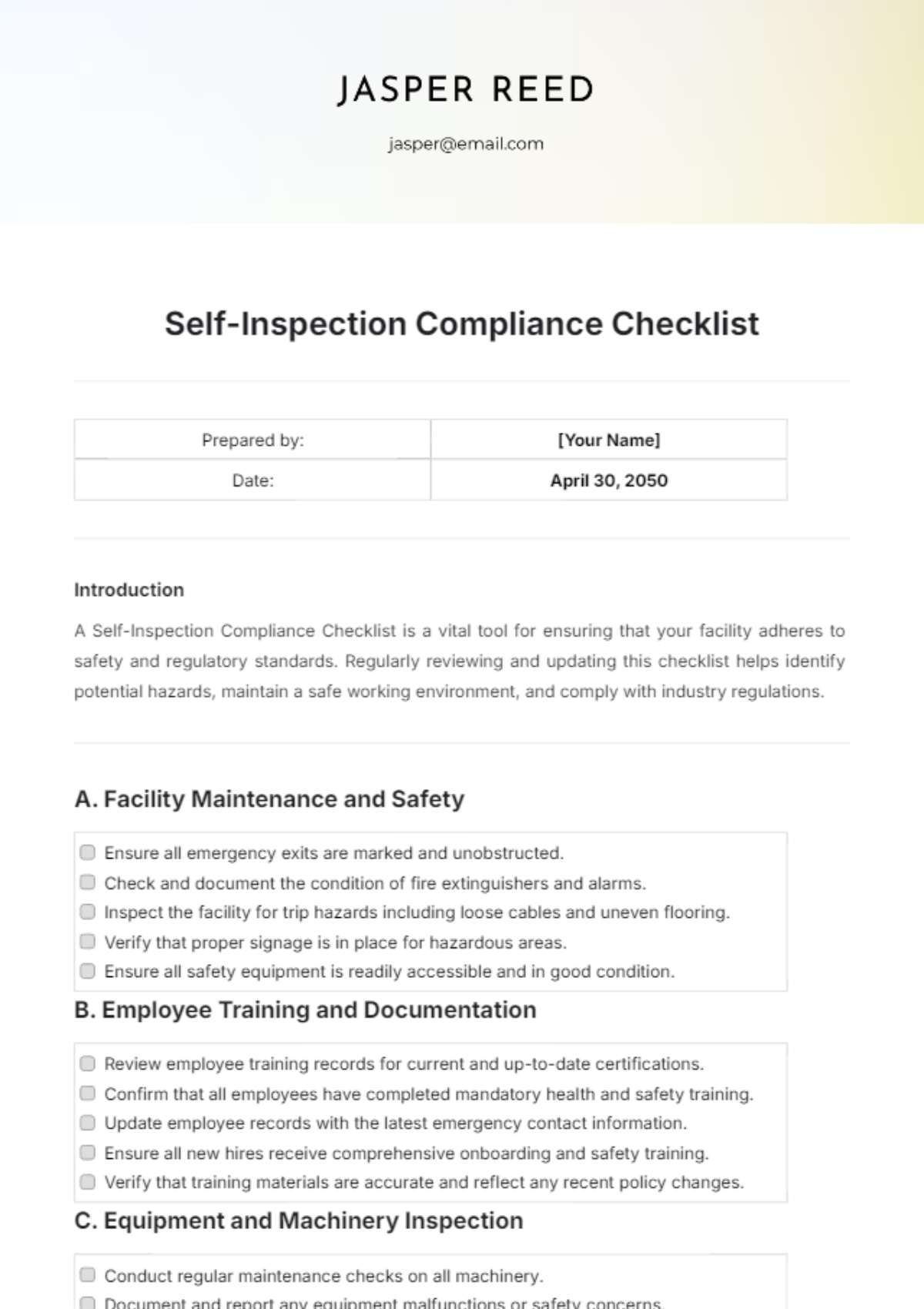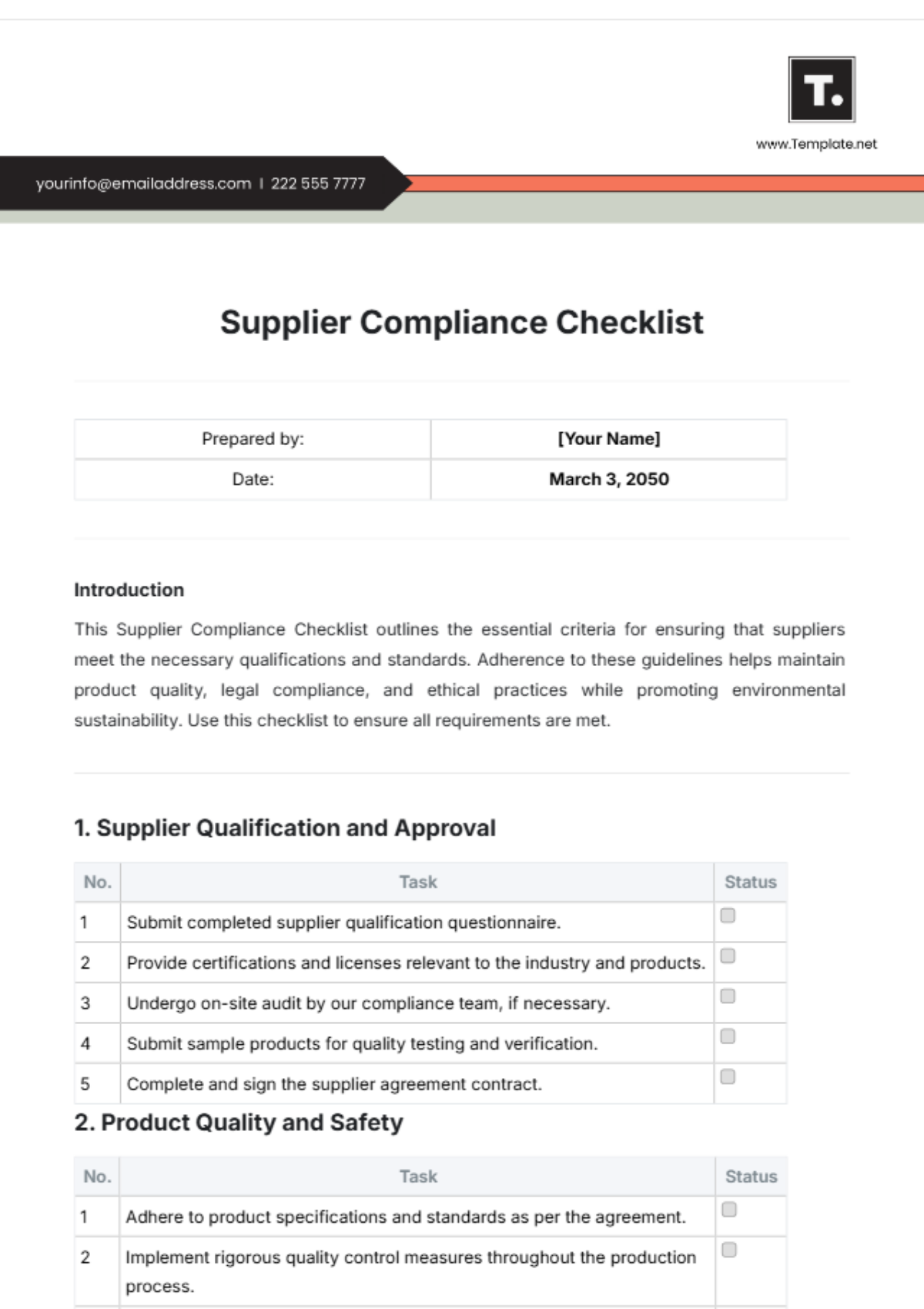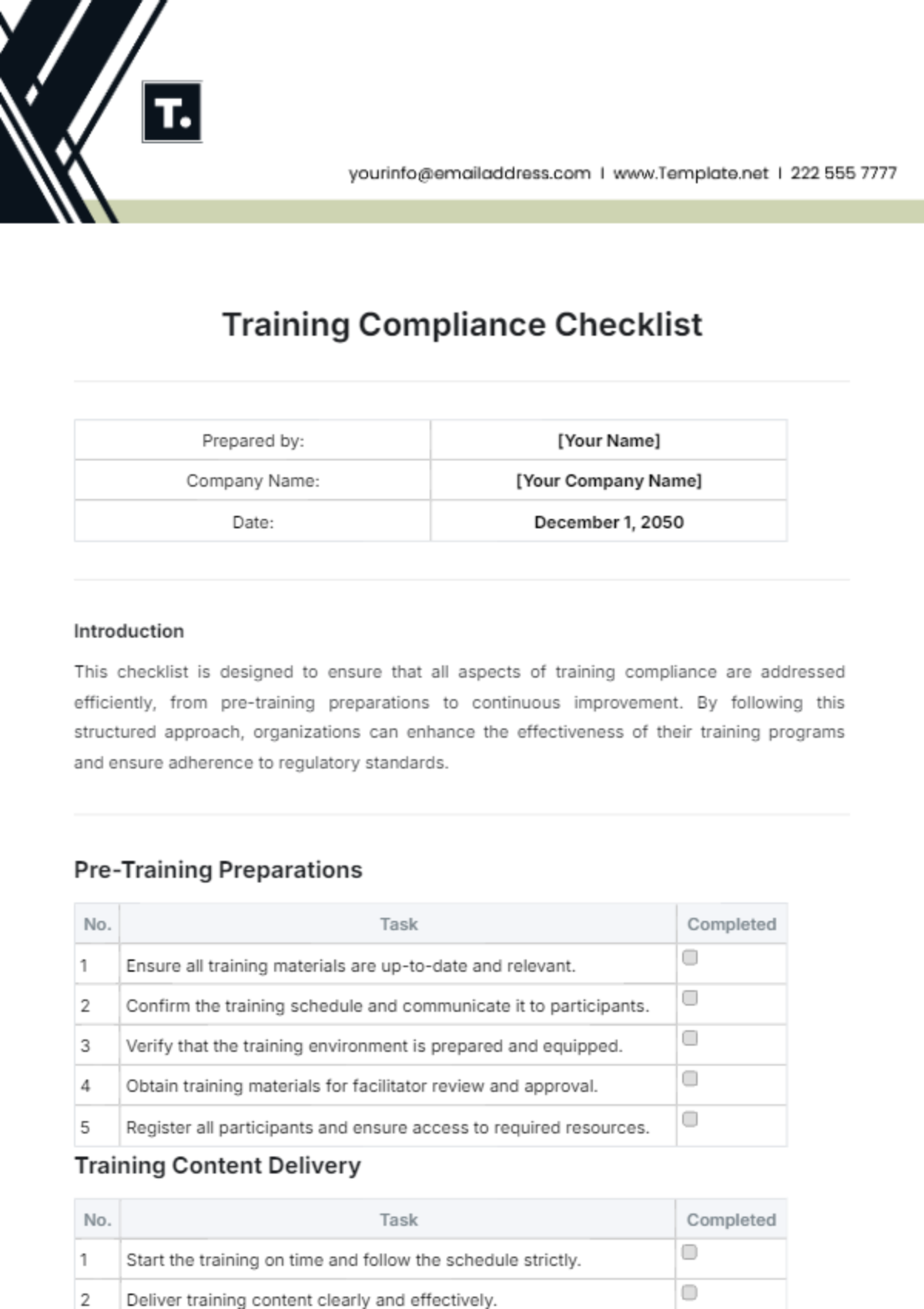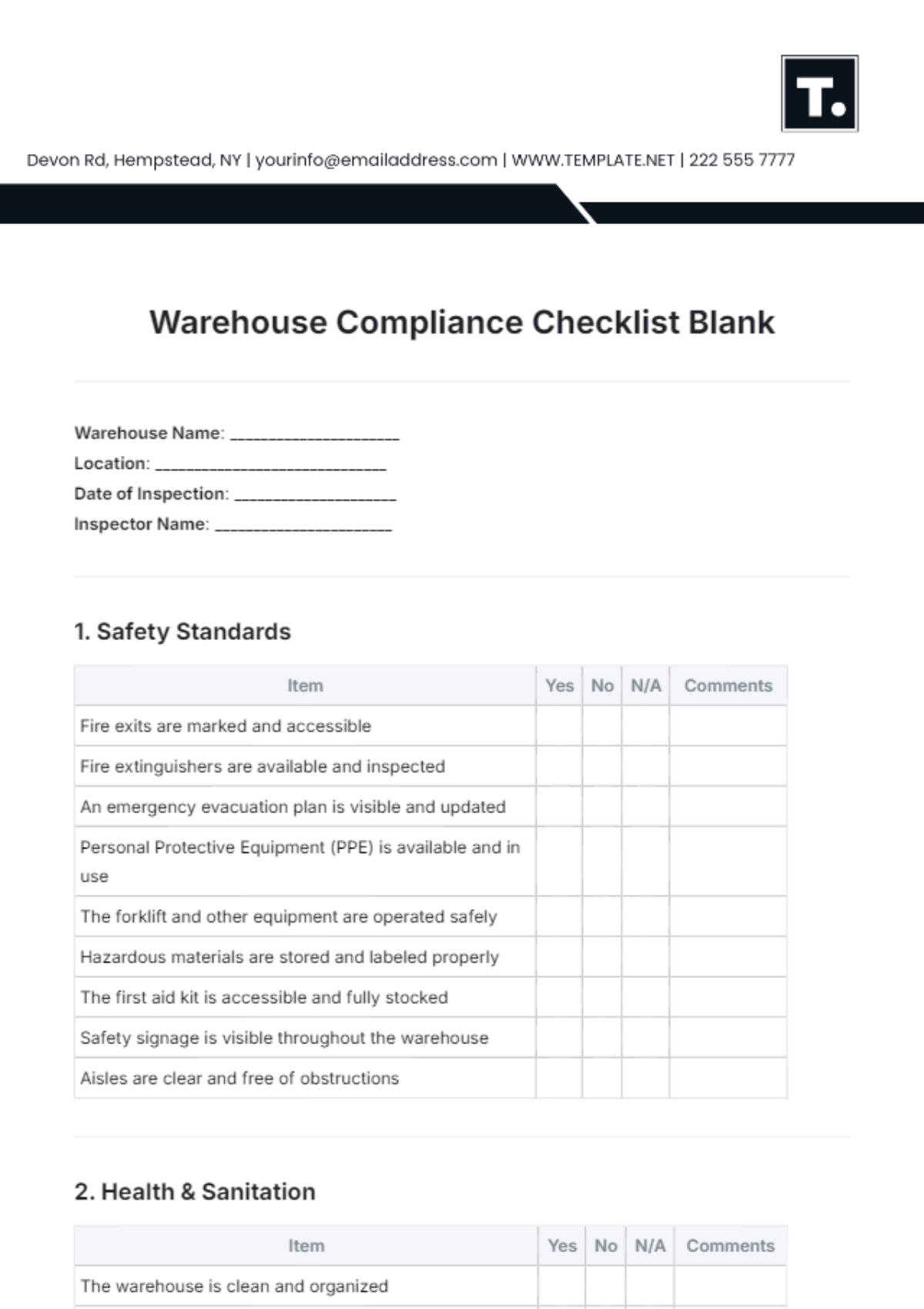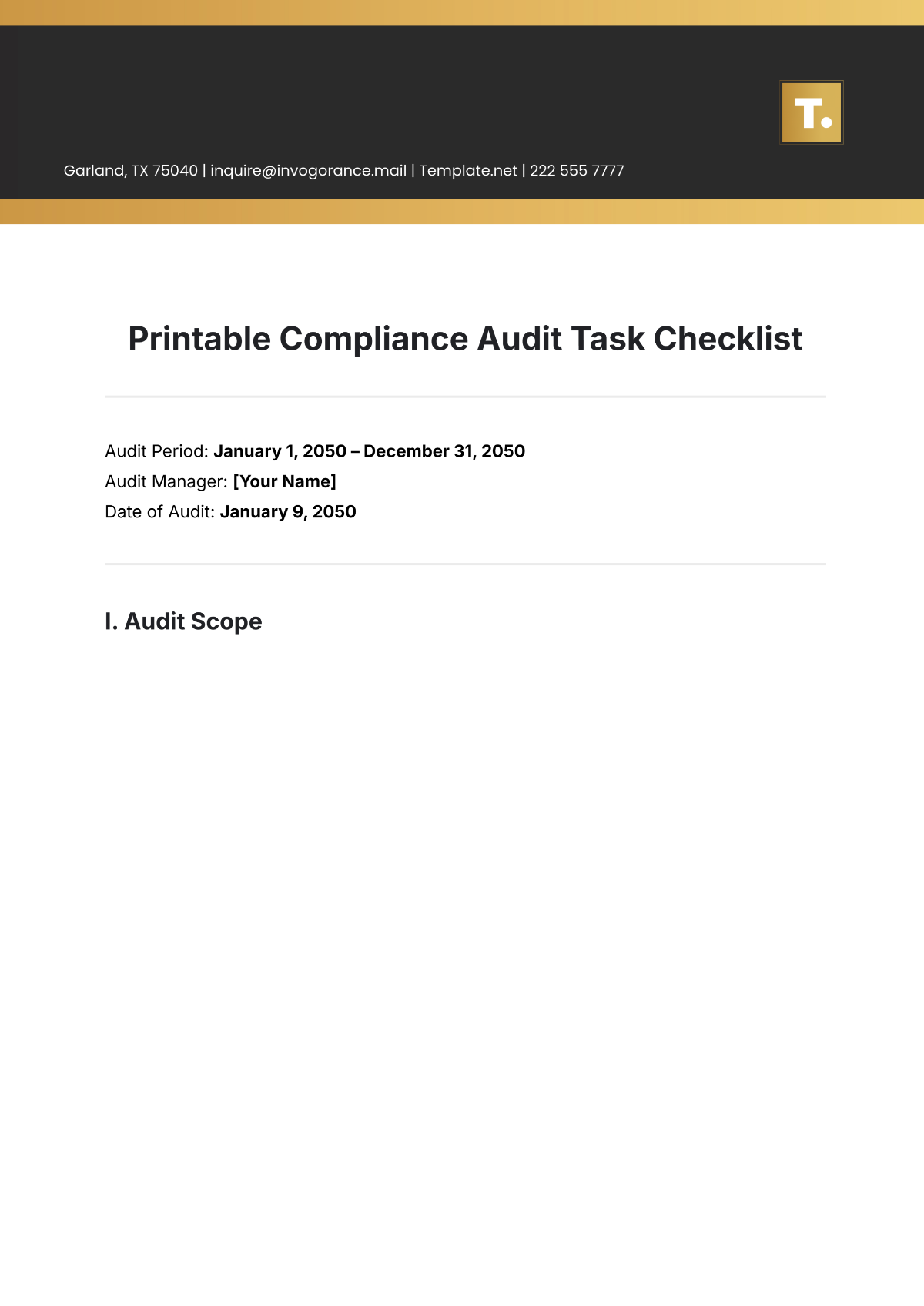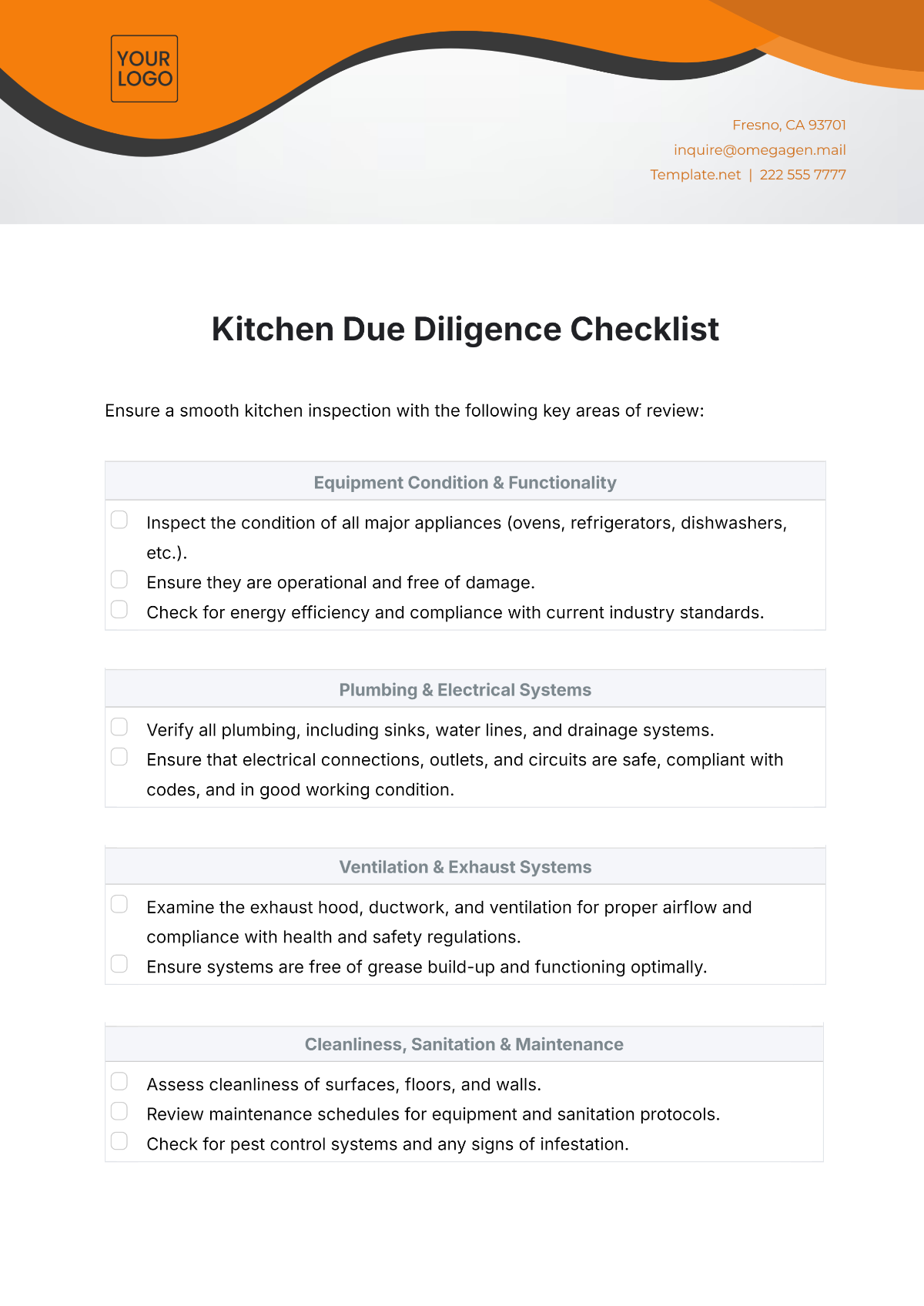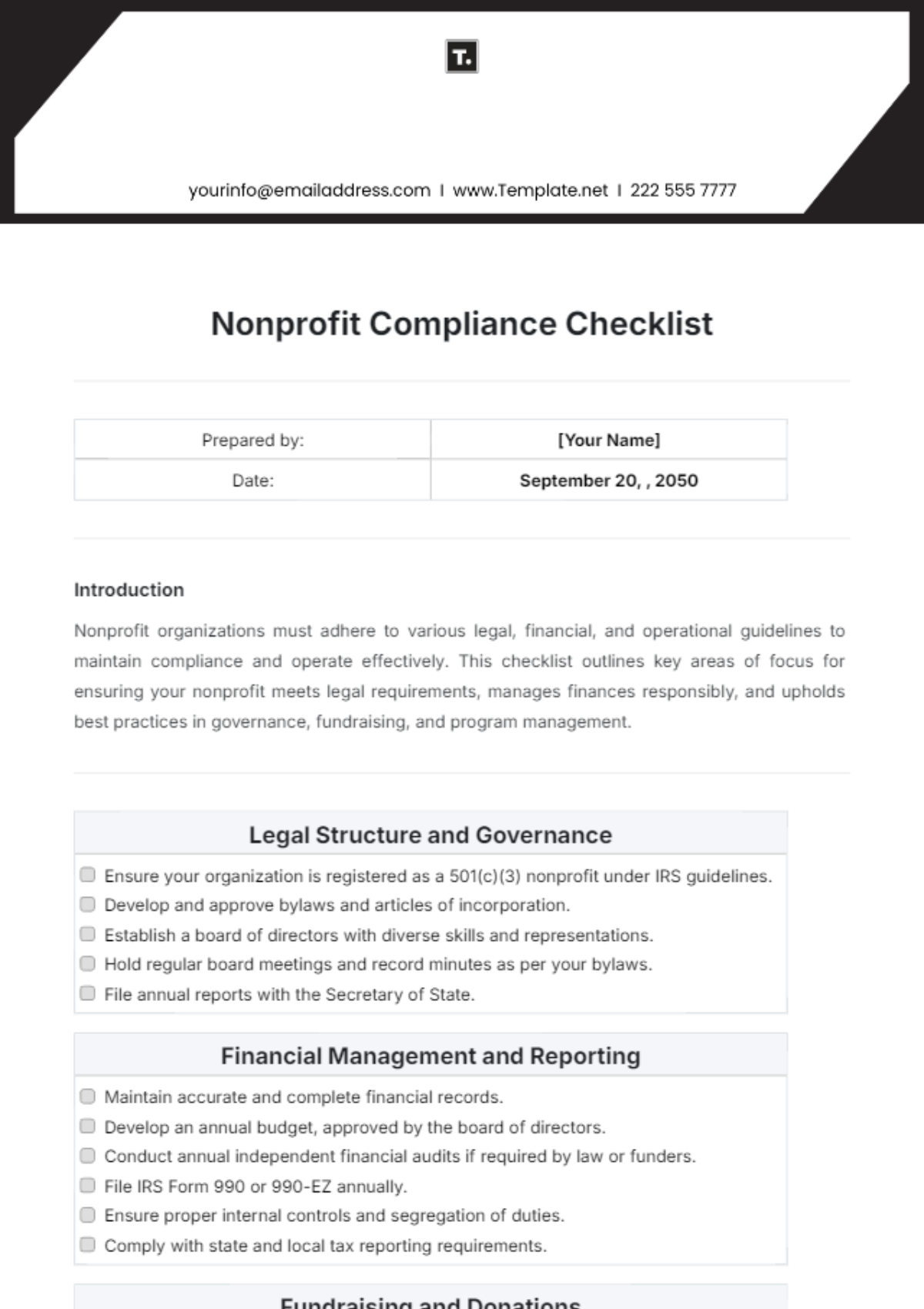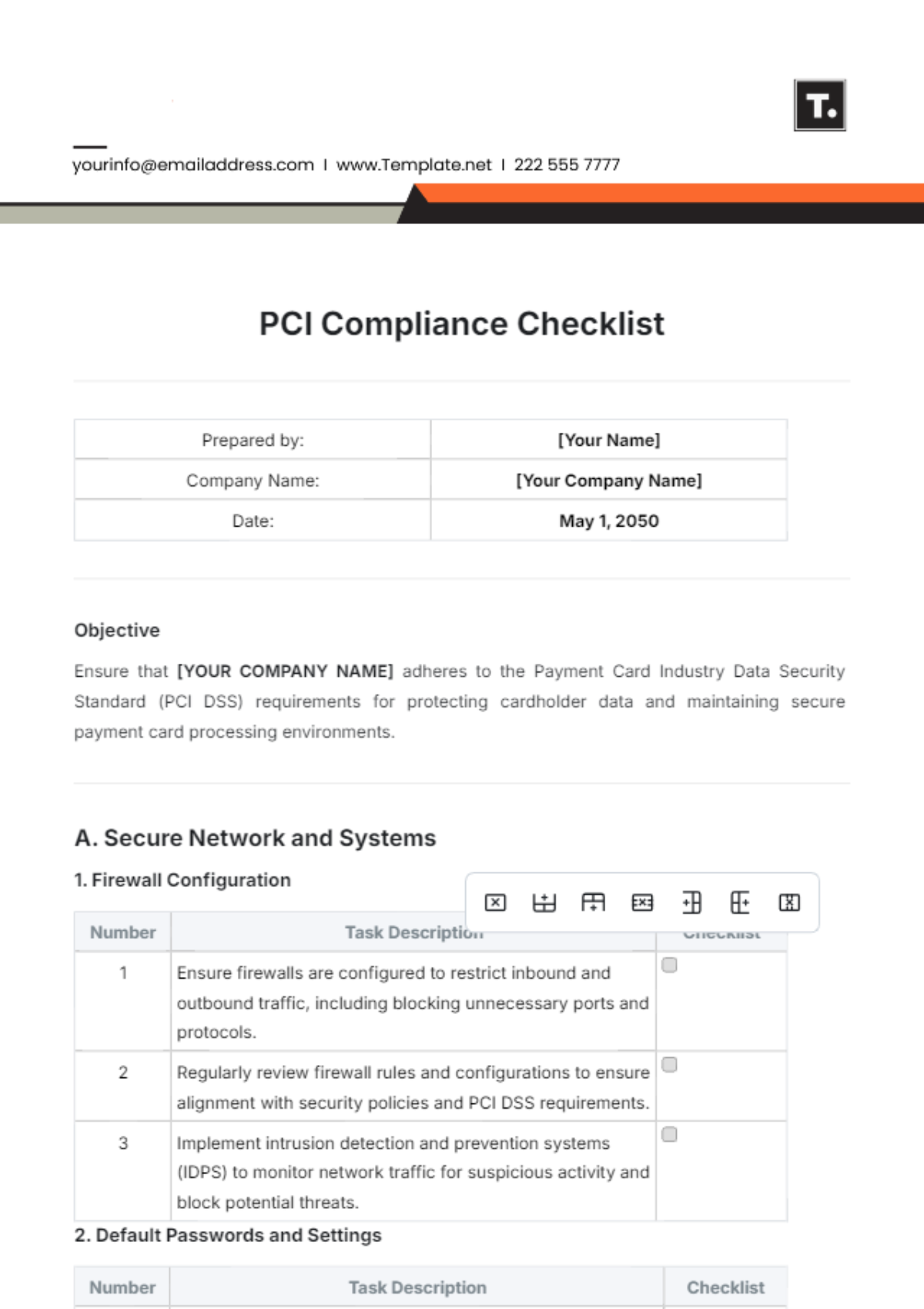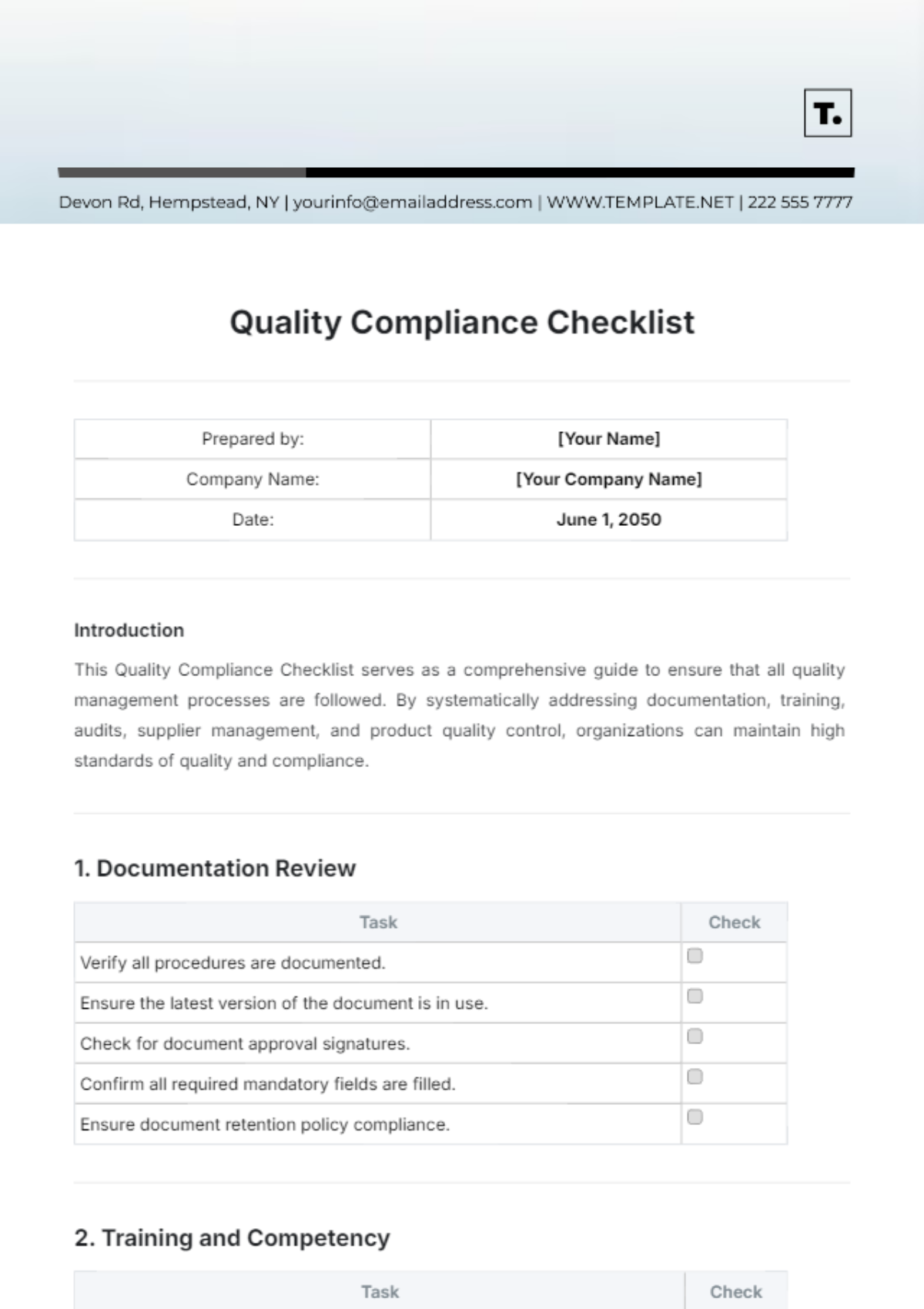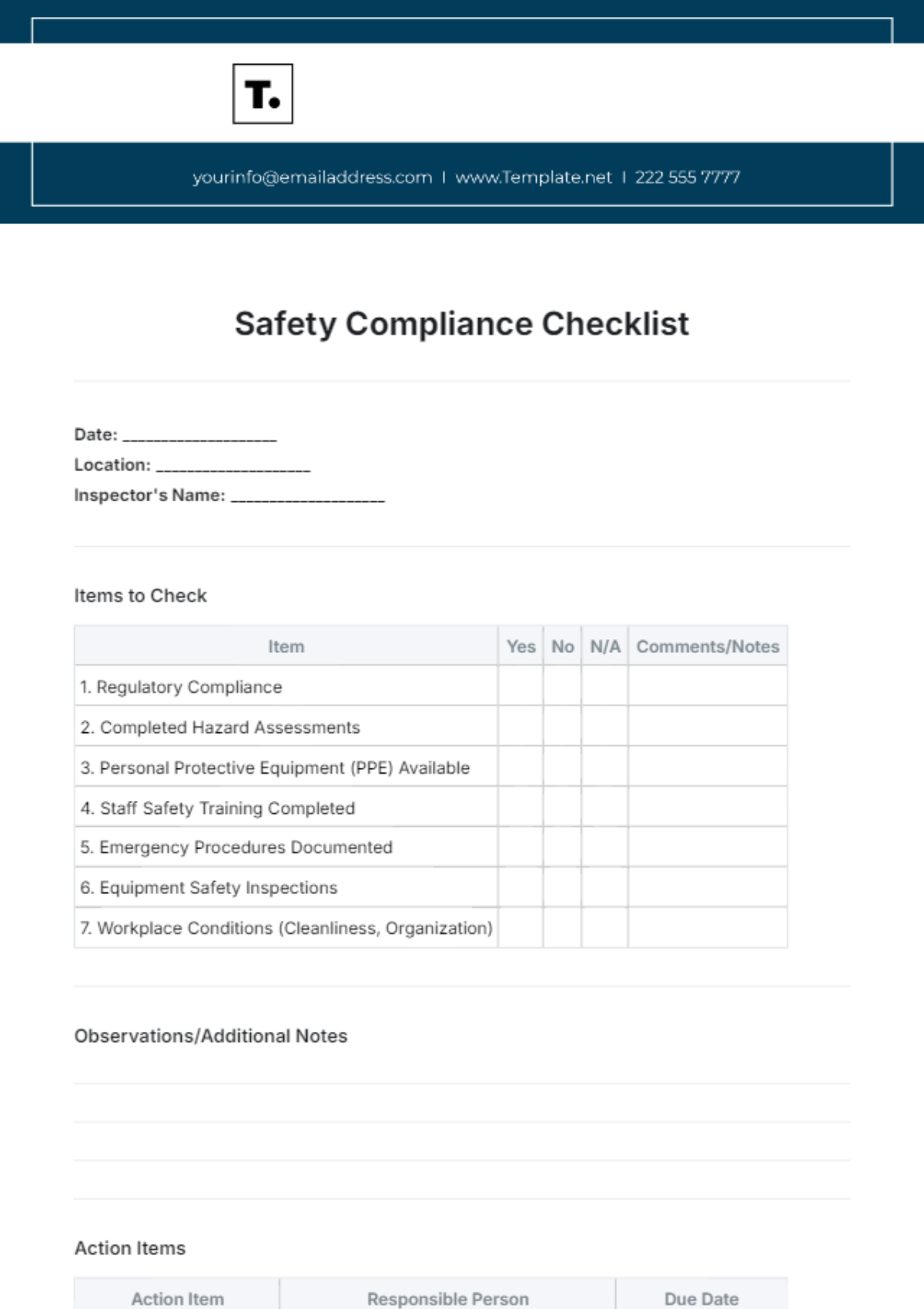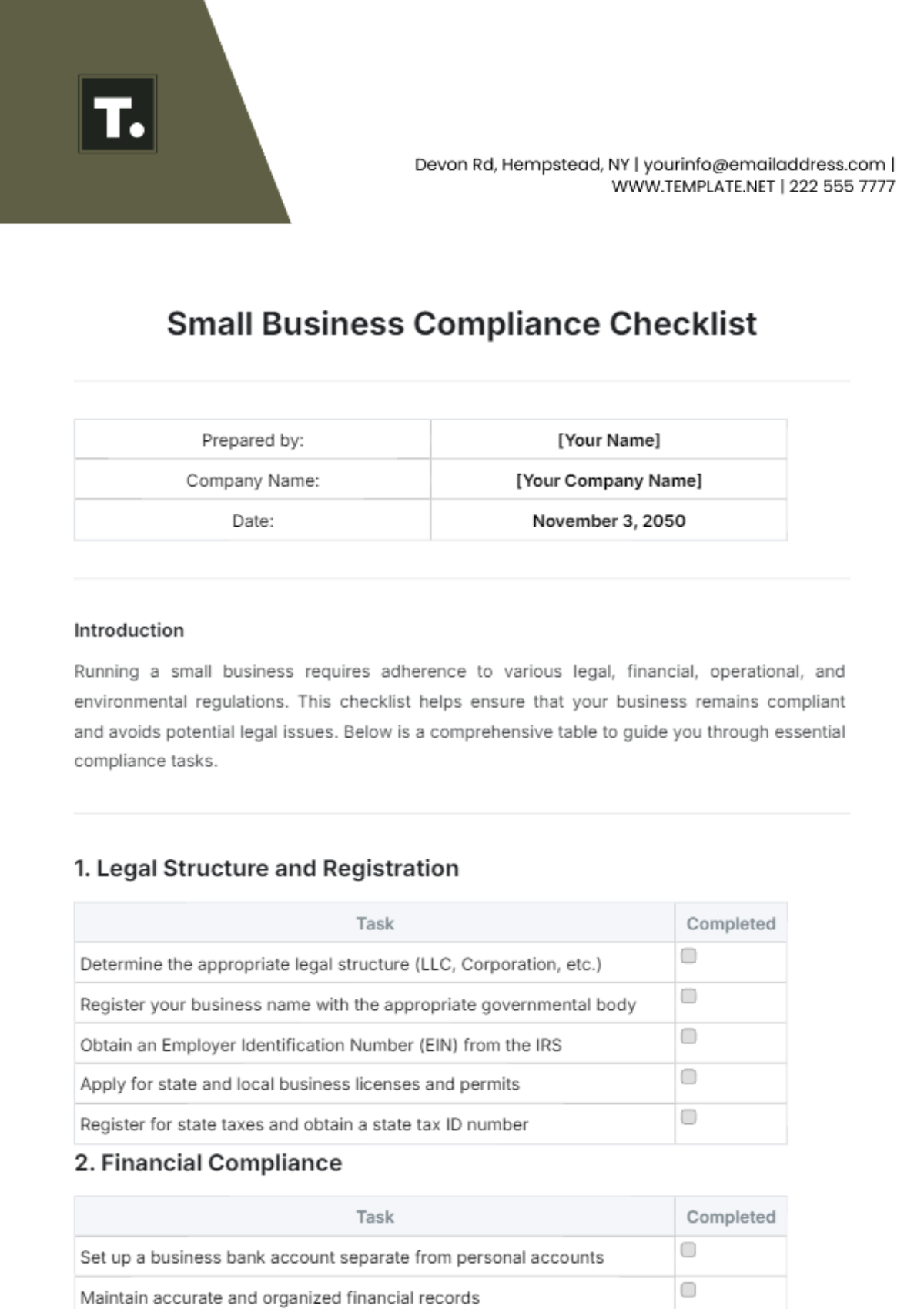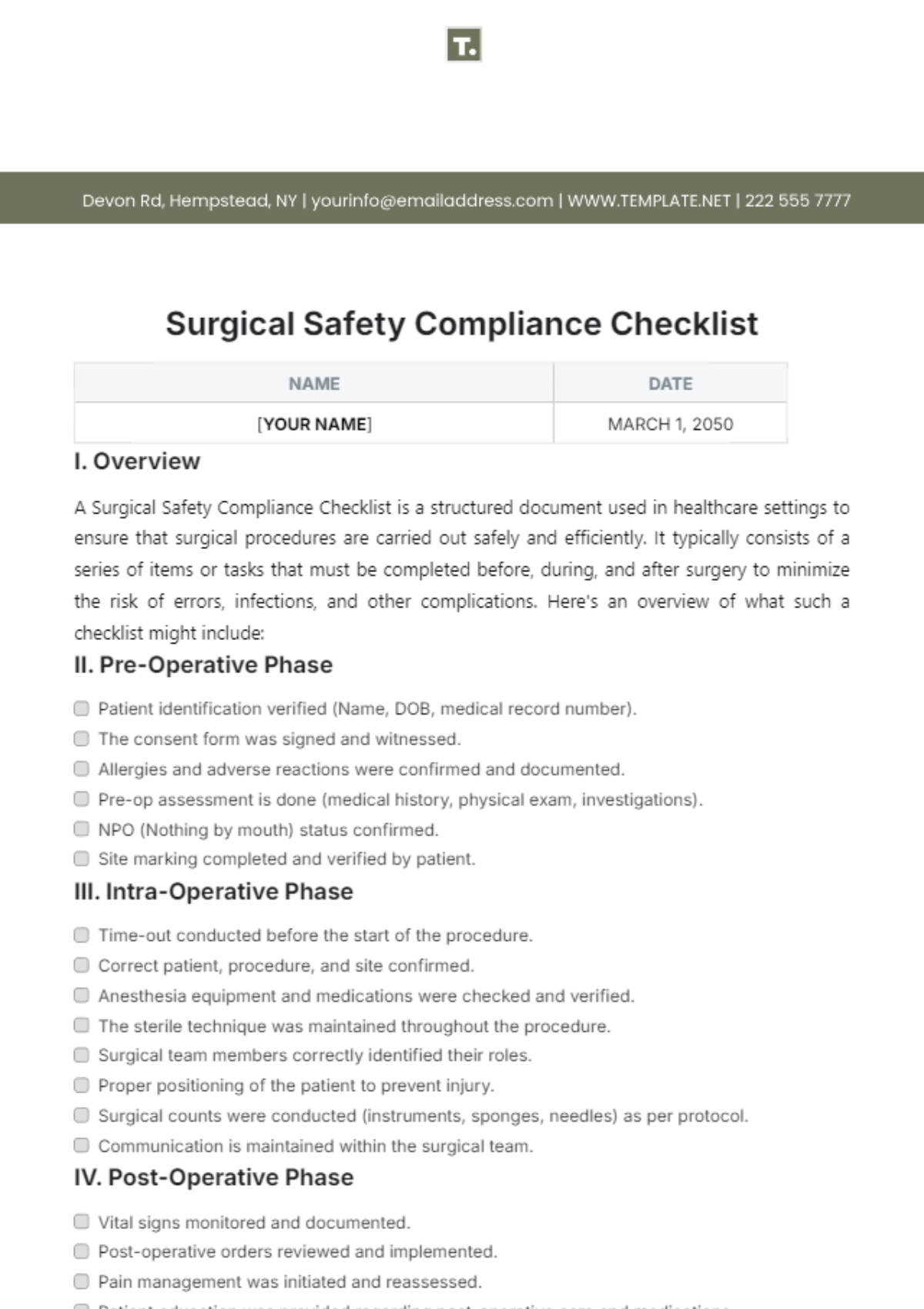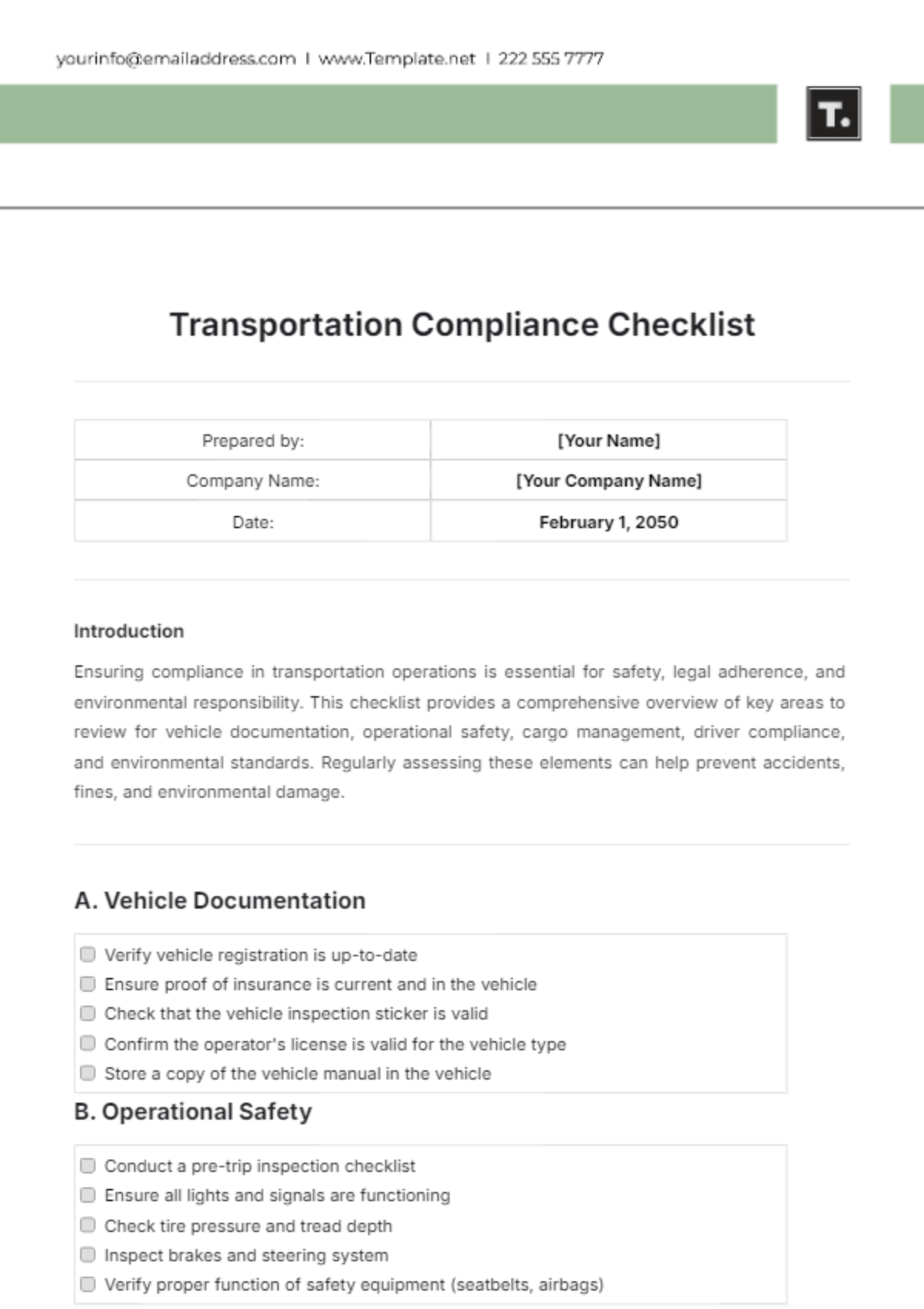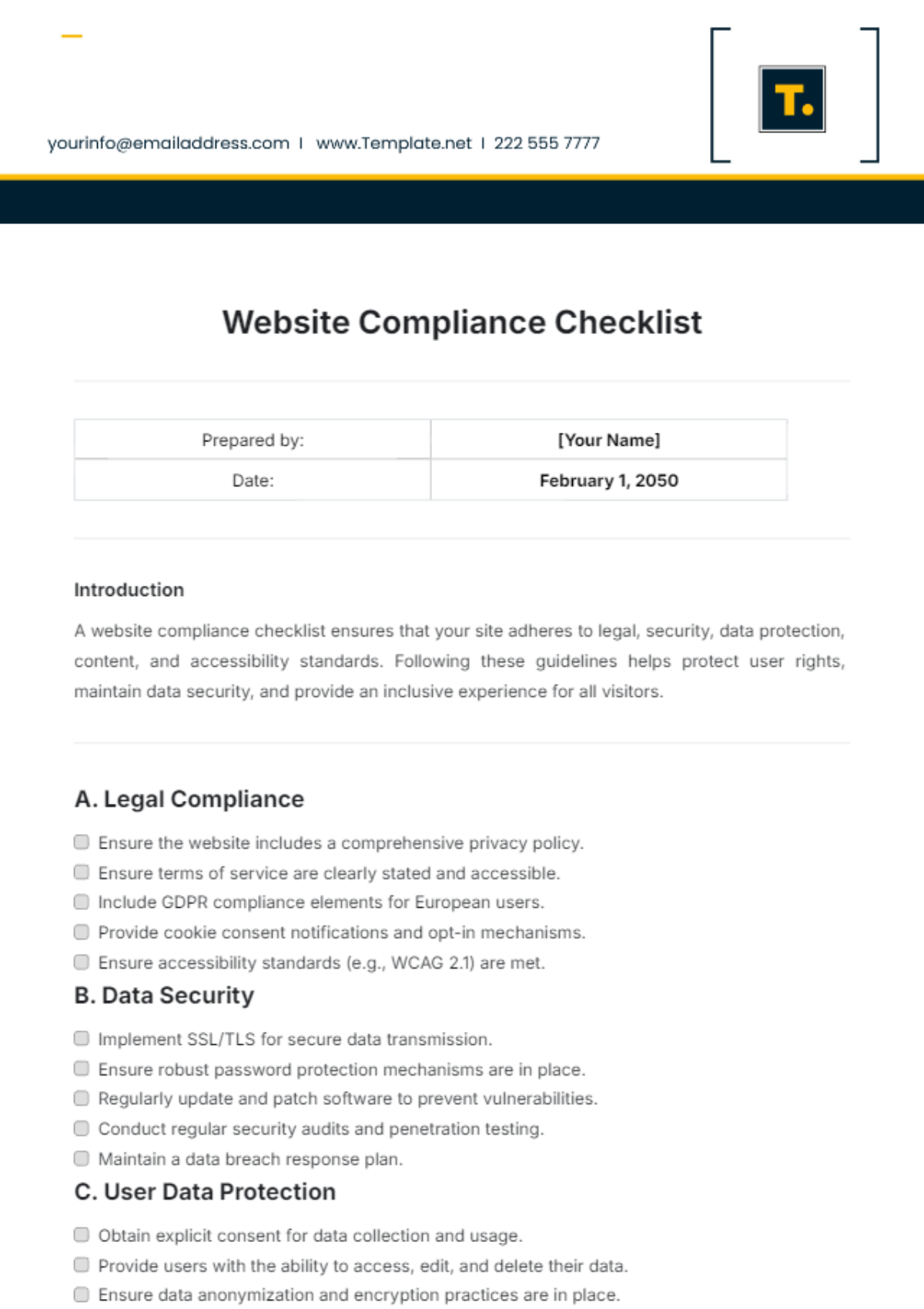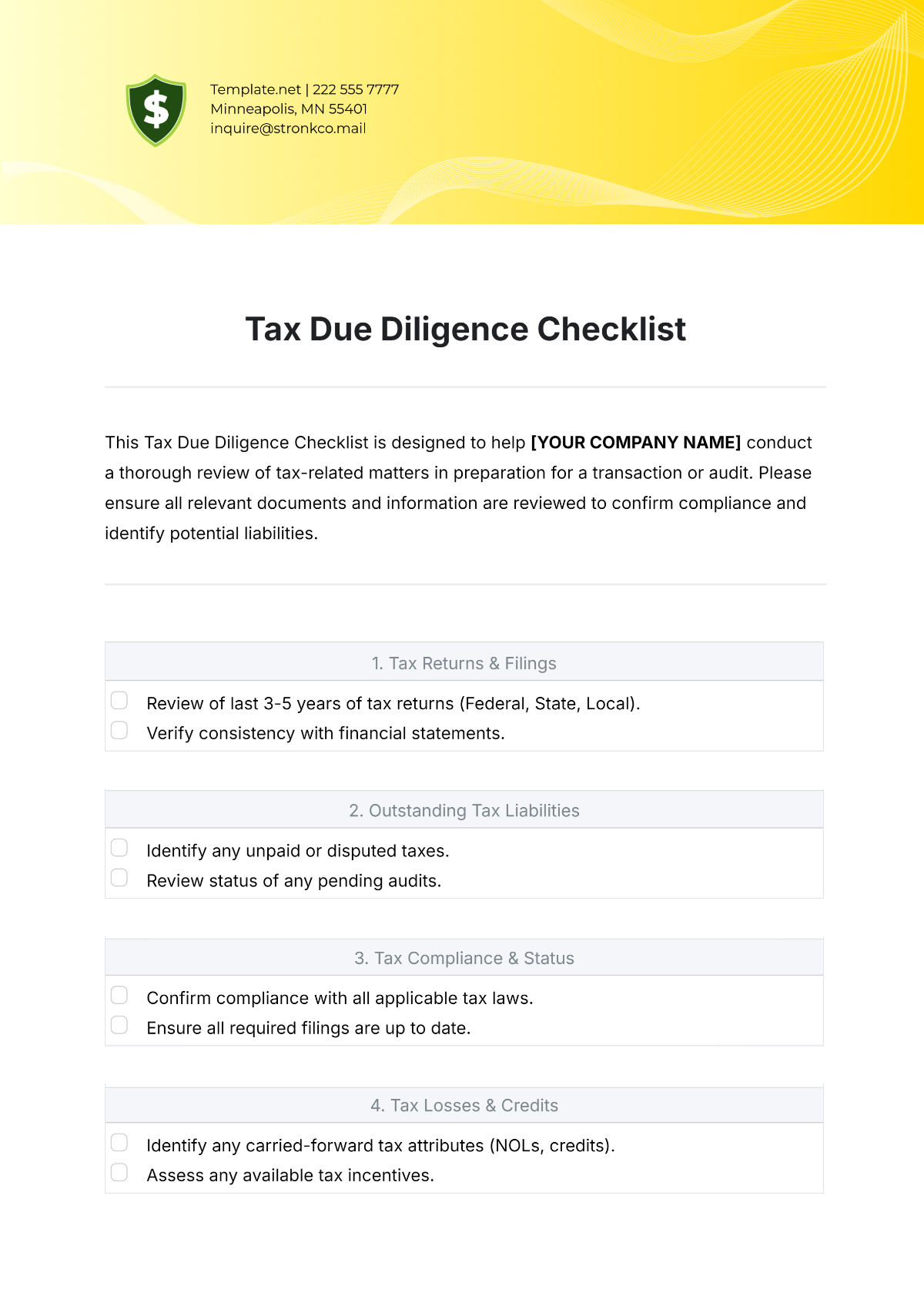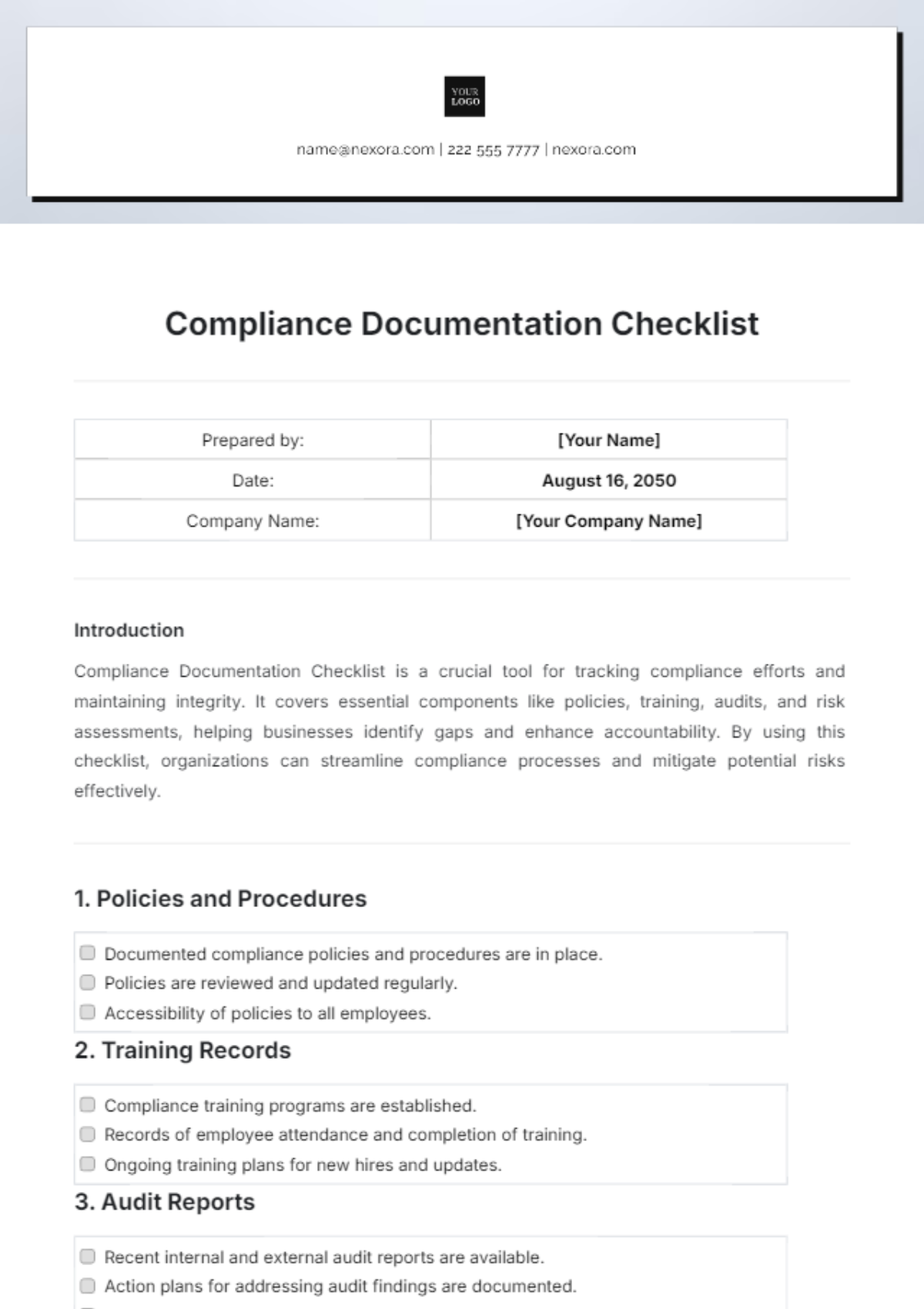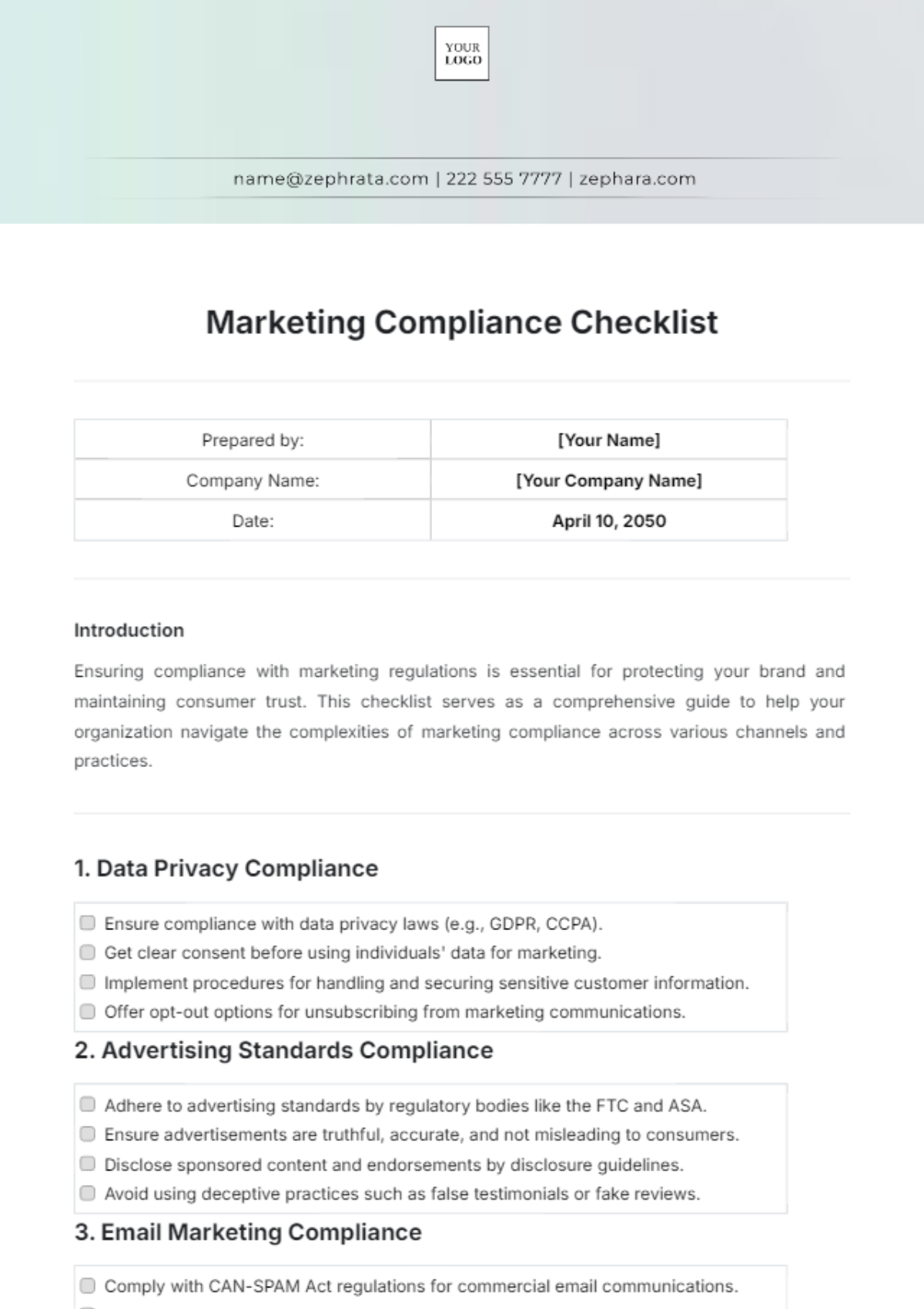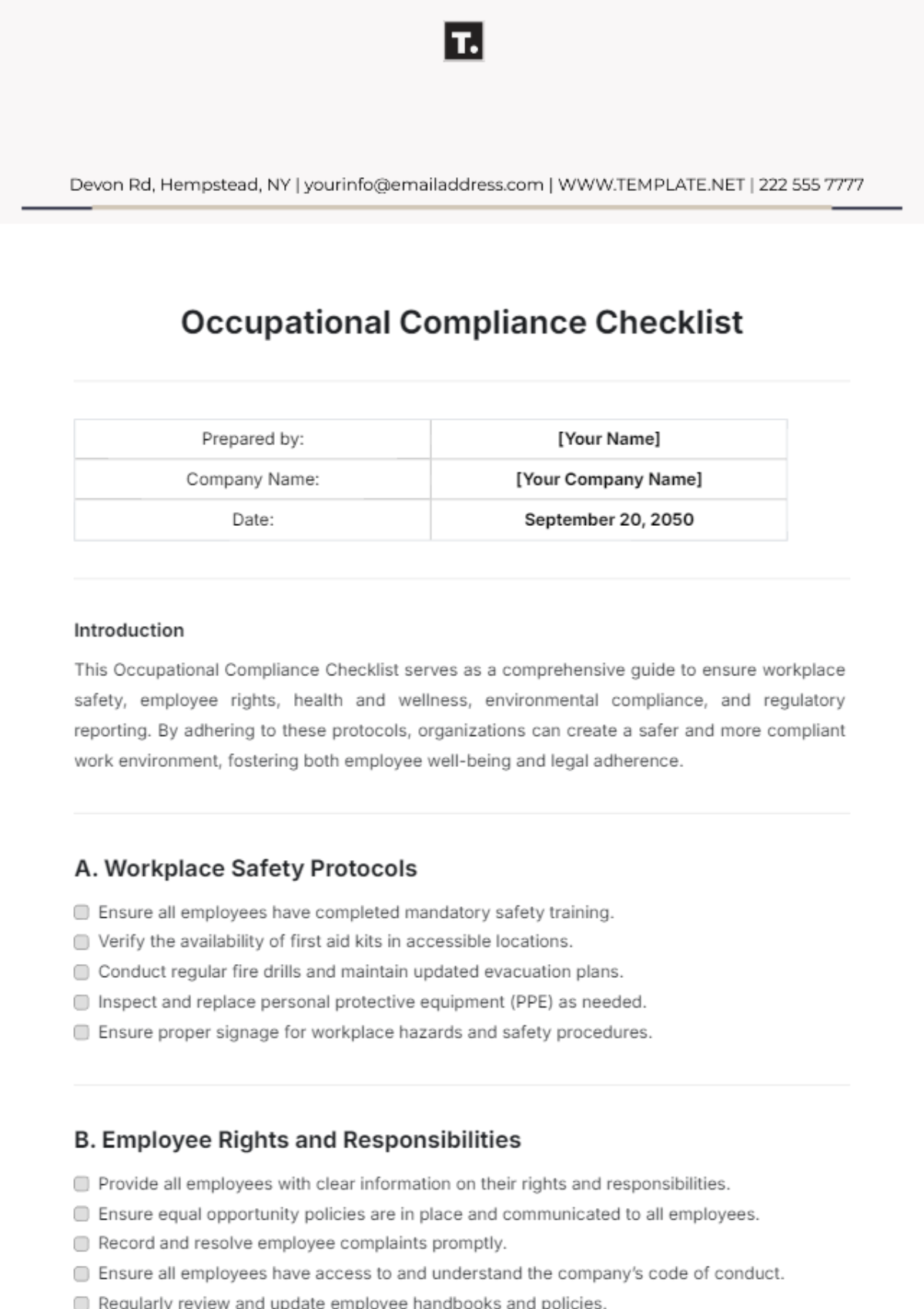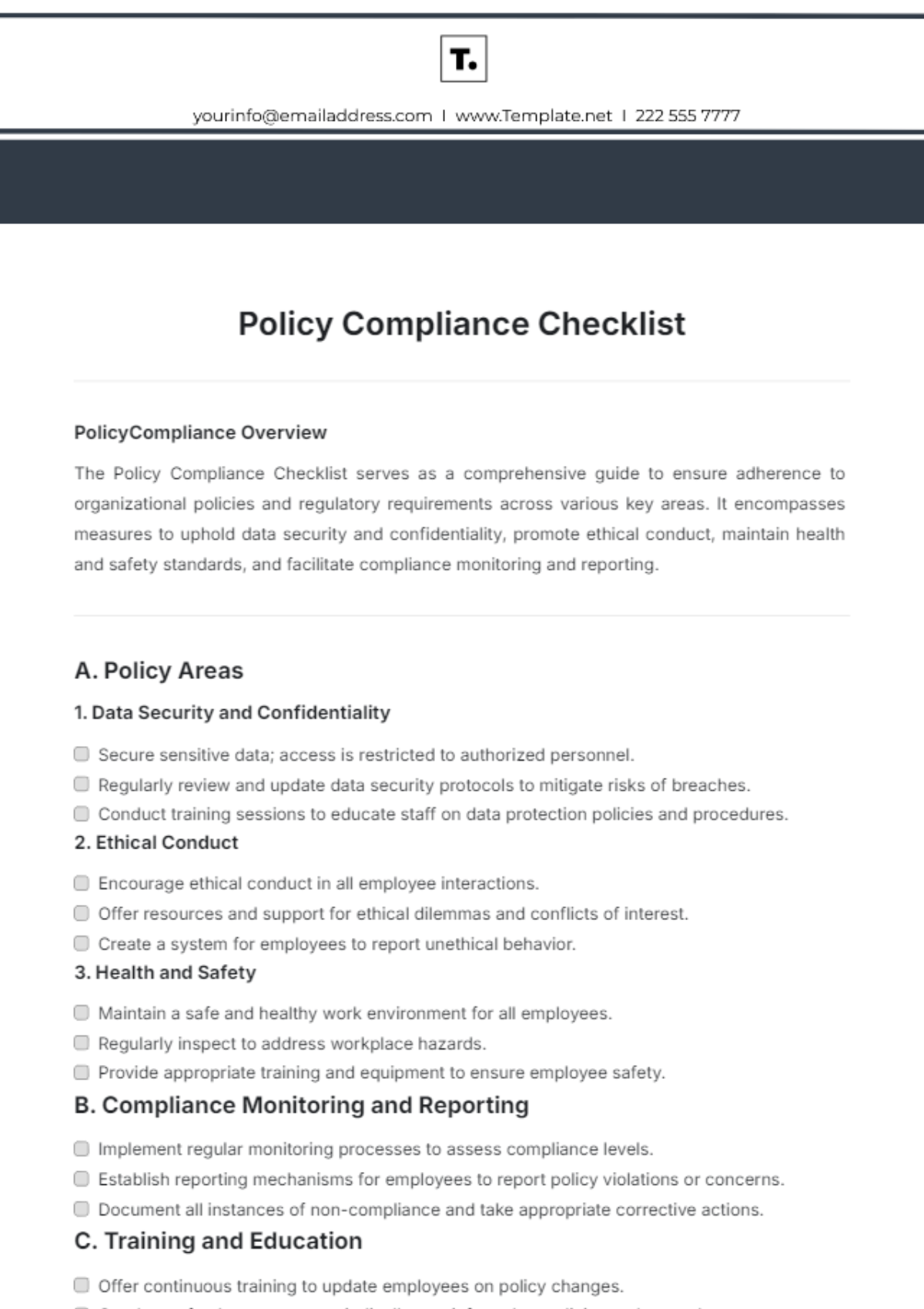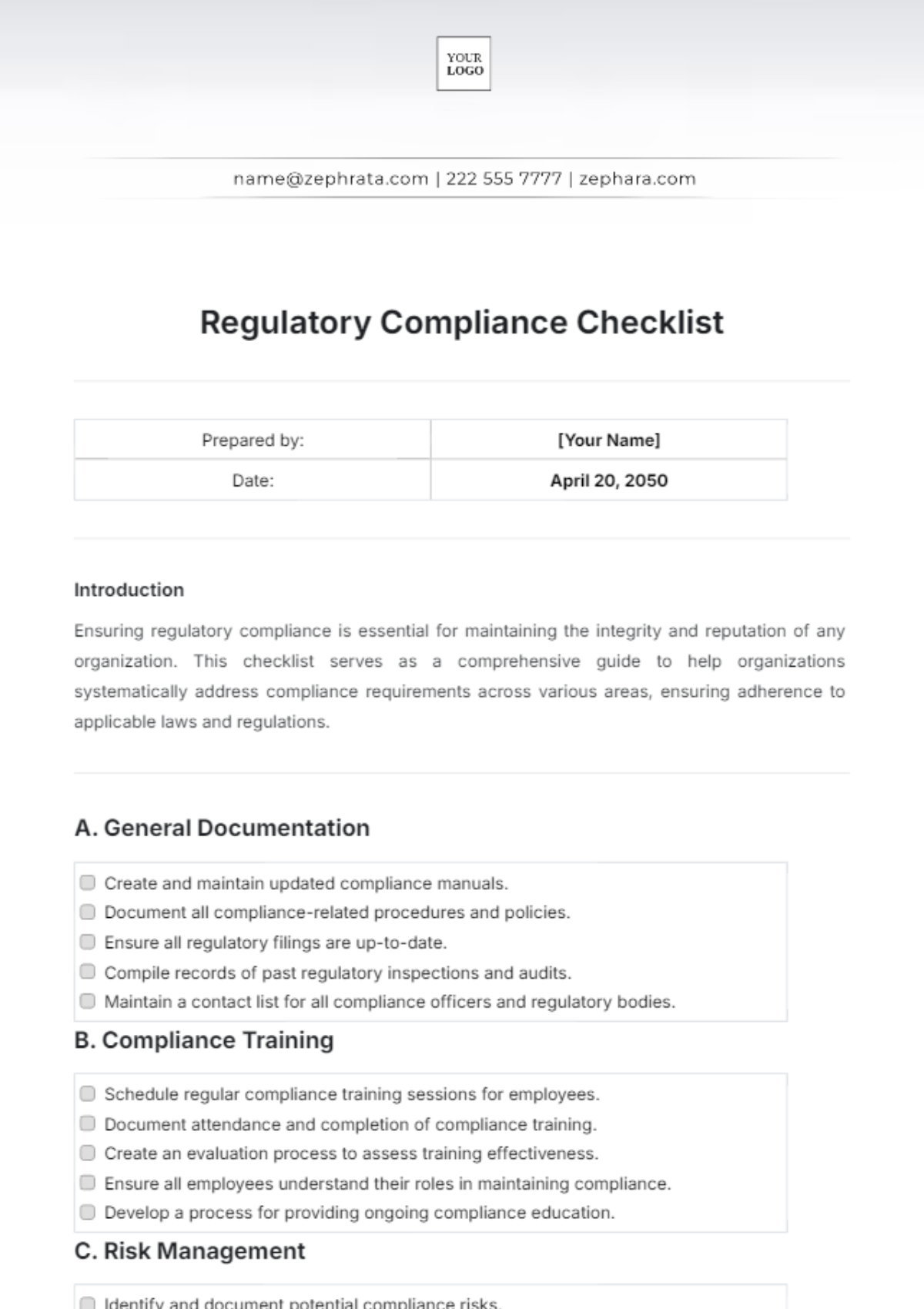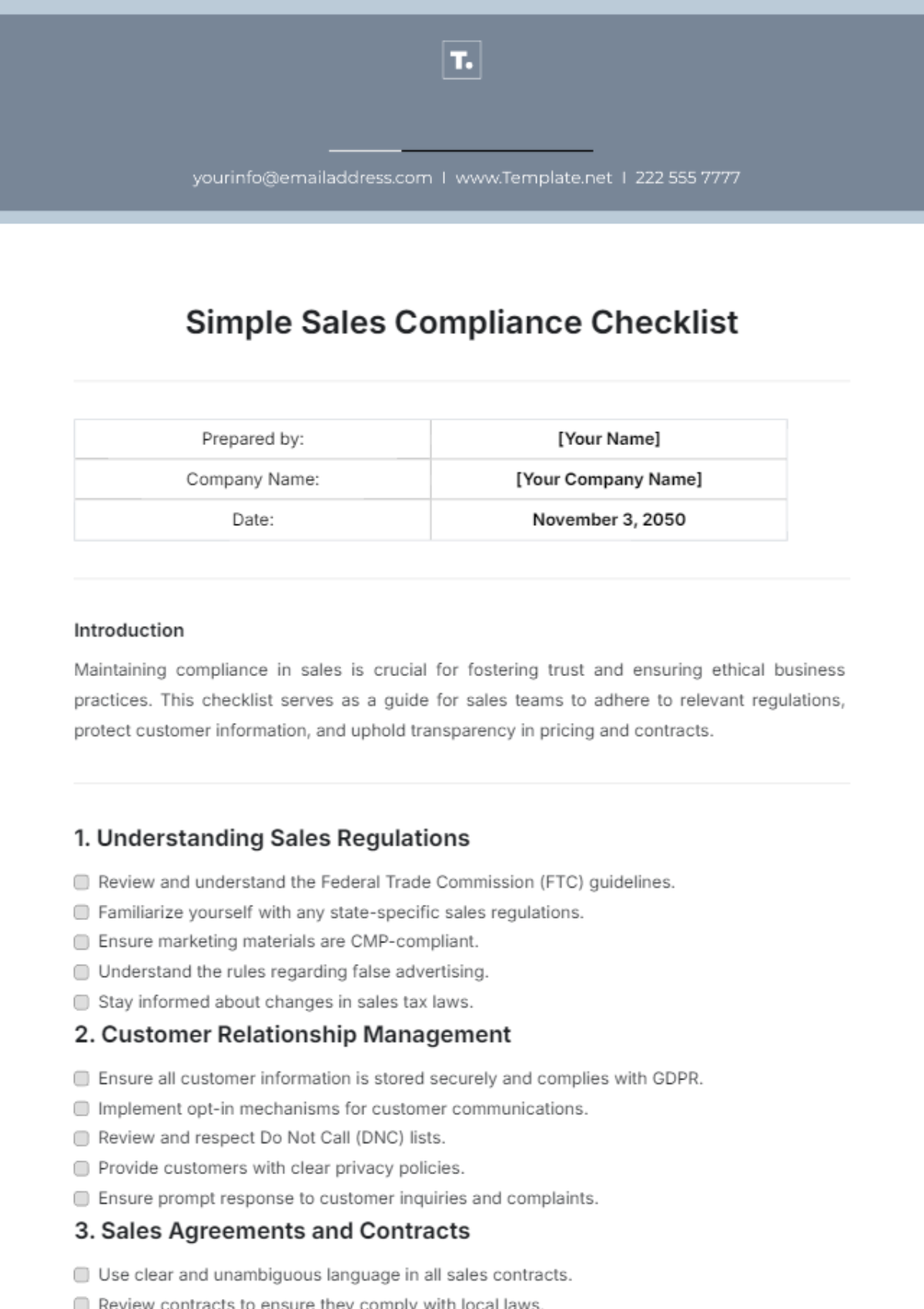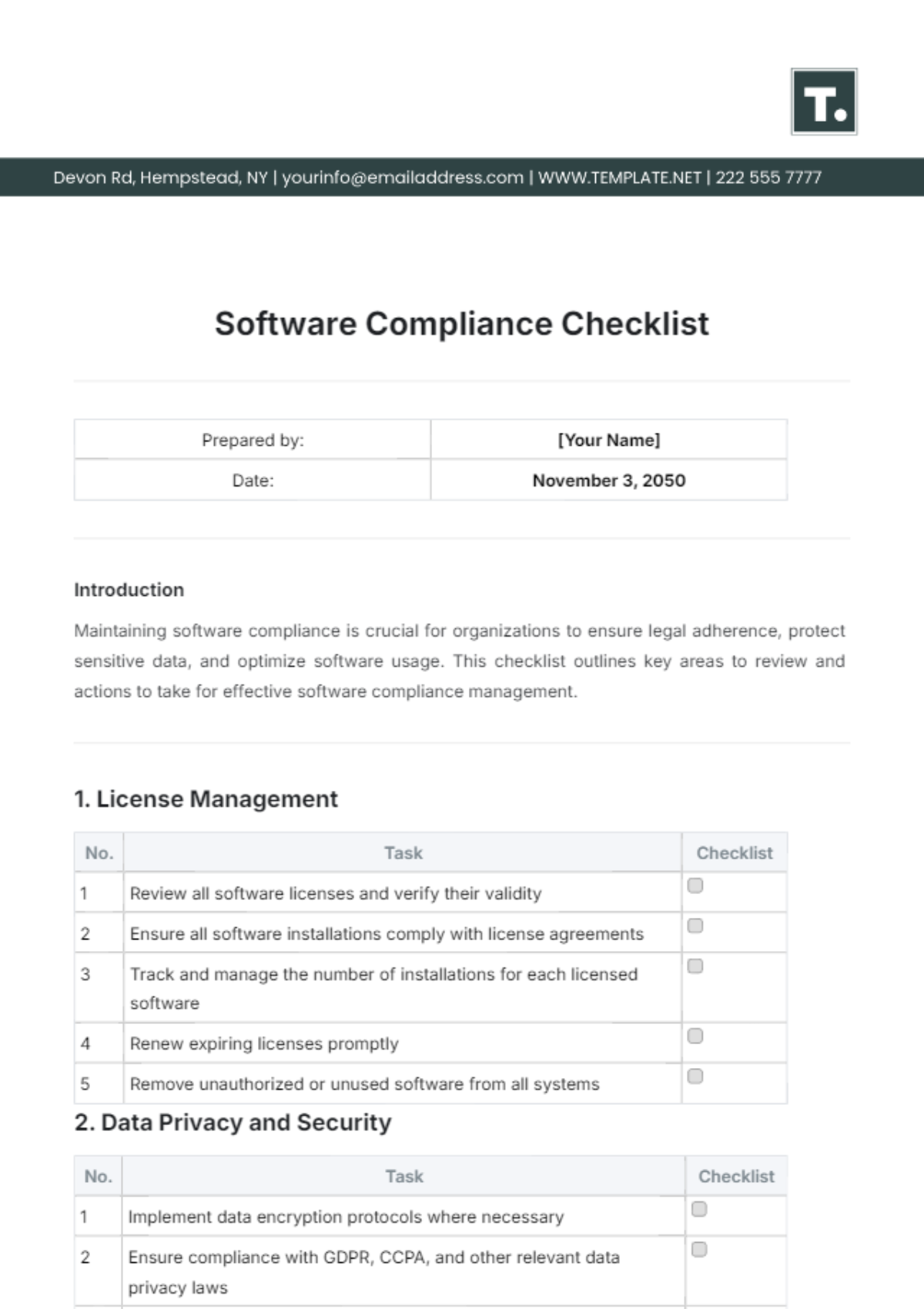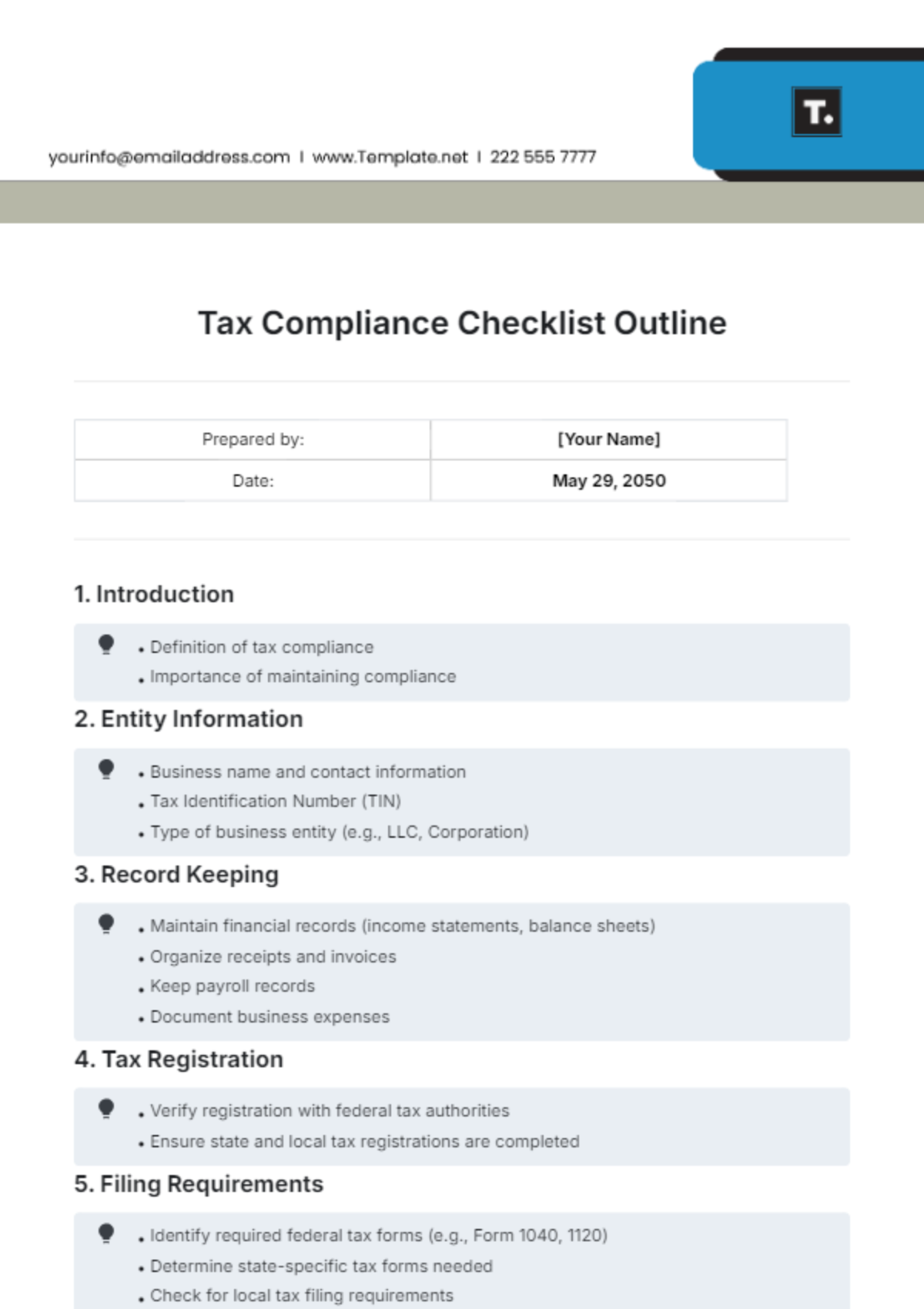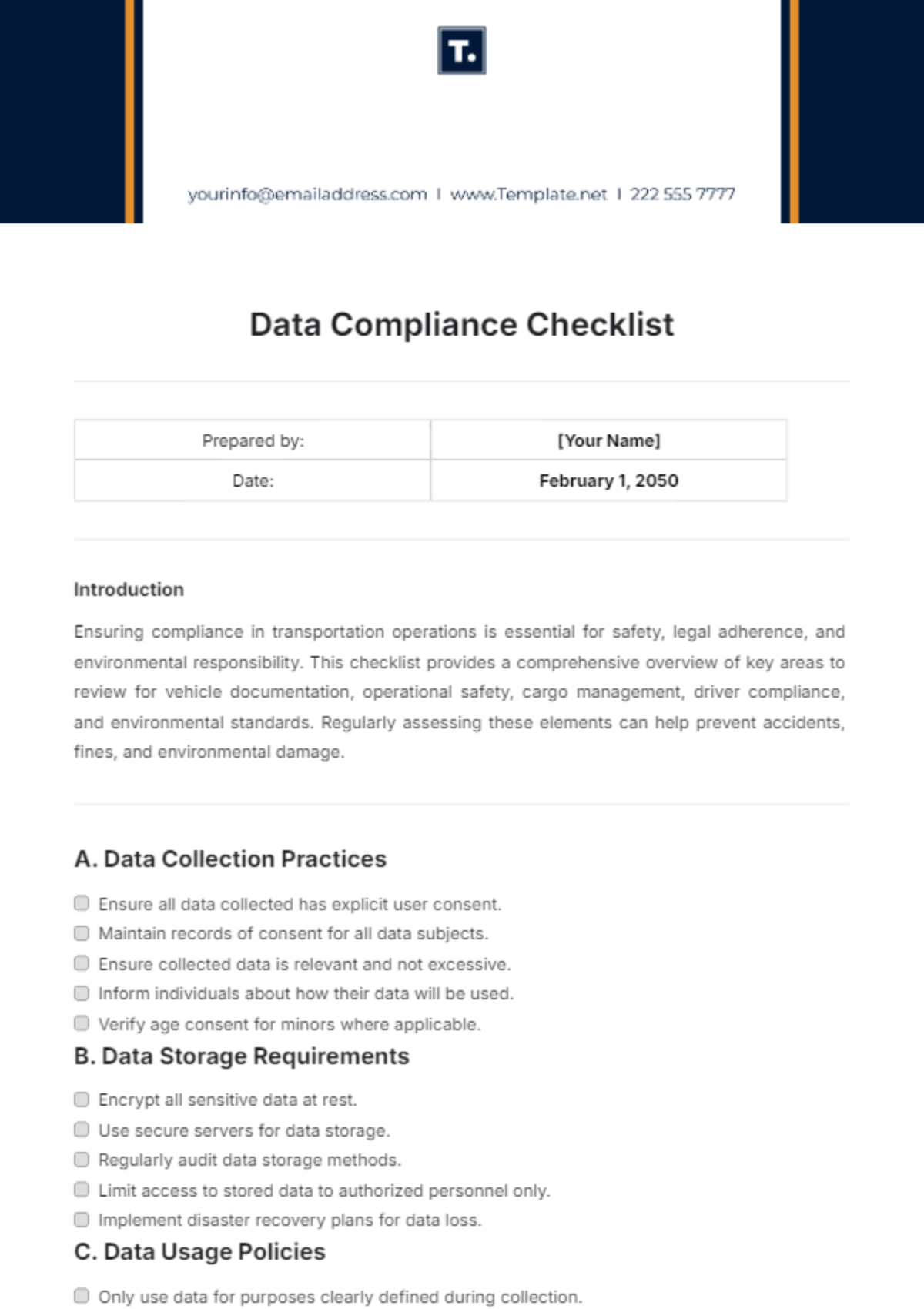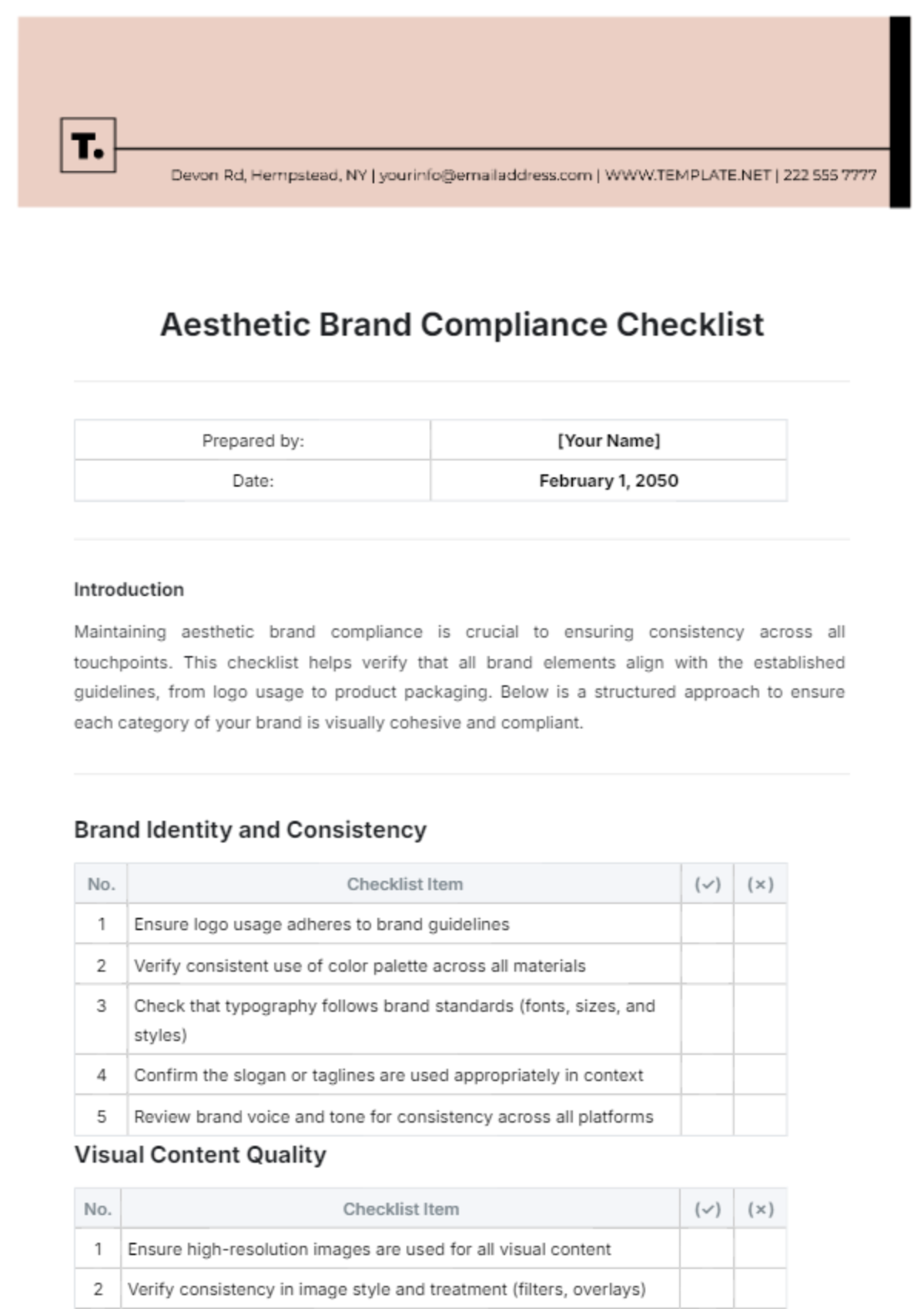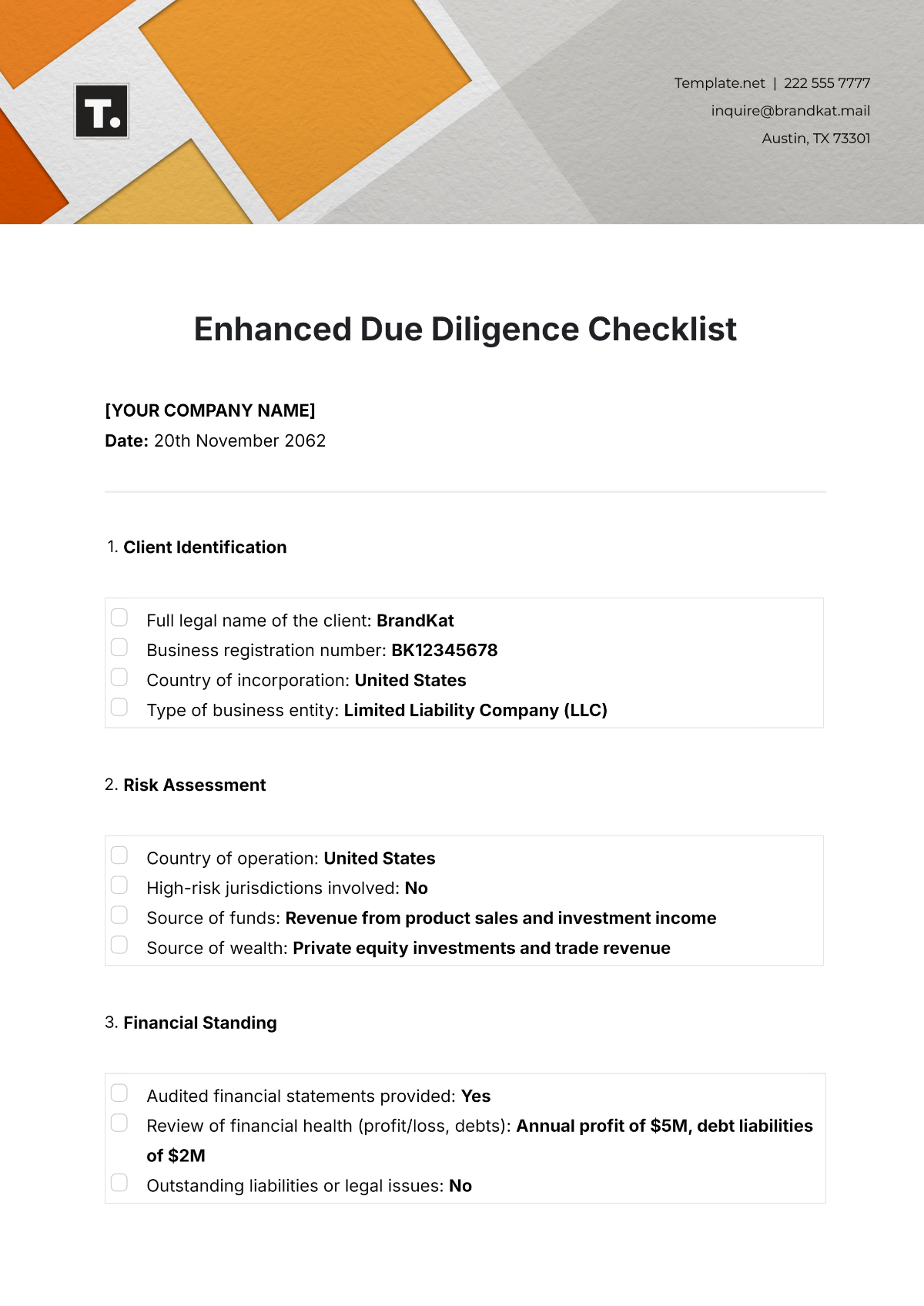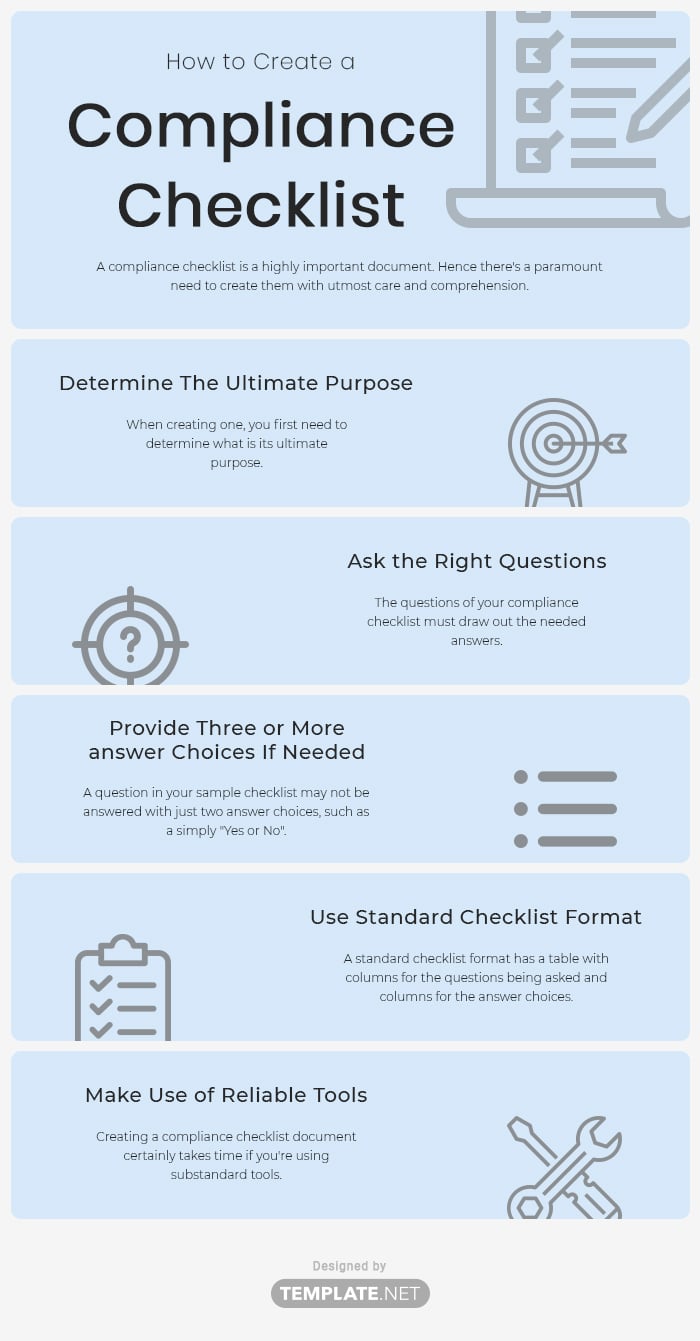A compliance checklist (also known as compliance sheet and compliance questionnaire) is a set of questions used to assess if a business is compliant to the requirements, guidelines, and policies obliged onto them, especially when it comes to their products and services (more specifically a quality checklist). A compliance checklist takes many names and forms, depending on how it's being used and its purpose. (e.g. HR audit checklist, security checklist, finance checklist)
A compliance checklist is a highly important document. Hence there's a paramount need to create them with utmost care and comprehension. With that in mind, we have gathered a few tips on how to create a compliance checklist.
1. Determine The Ultimate Purpose
Every compliance checklist has its own ultimate purpose. When creating one, you first need to determine what is its ultimate purpose. Will it be for the improvement of security measures? Will it be a complete assessment of a business's products and services? Only you can answer those questions. The checklist's ultimate purpose must only be its focus, no other else.
2. Ask the Right Questions
A checklist form without the right questions is basically useless and it will lead you nowhere. The questions of your compliance checklist must draw out the needed answers. Those answers will then add up and culminate as one single conclusion, which will then comply with the ultimate purpose of your compliance checklist. Basically, all you have to do in this process is to ask the questions that are relevant to the agenda at hand.
3. Provide Three or More Answer Choices If Needed
A question in your sample checklist may not be answered with just two answer choices, such as a simple "Yes or No". A lack of answer choices may ruin the context of the answer, which means you will not be obtaining the needed information. To solve this dilemma, you can add a "Please elaborate" or "How so" section to allow the person answering it to explain and add more context to his/her answer.
4. Use Standard Checklist Format
A standard checklist format has a table with columns for the questions being asked and columns for the answer choices. However, not all compliance checklist questionnaires and sheets need tables, especially if the questions are either close-ended or open-ended. You can make use of downloadable compliance checklist templates that can help you have the right format. Such templates are available here in Template.net. Or, you can view several compliance checklist examples for reference.
5. Make Use of Reliable Tools
Creating a compliance checklist document certainly takes time if you're using substandard tools. But that will never be the case if you opt to use reliable ones.
